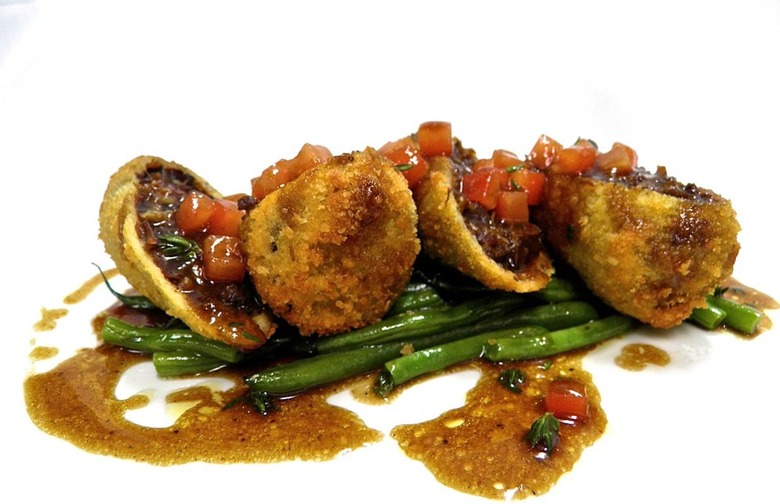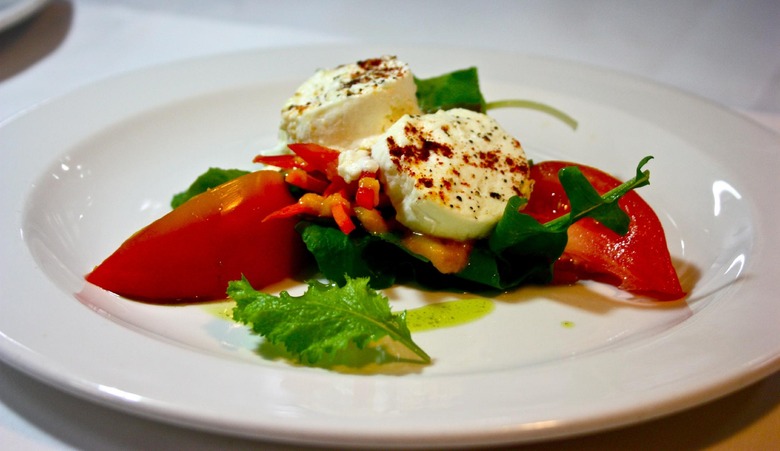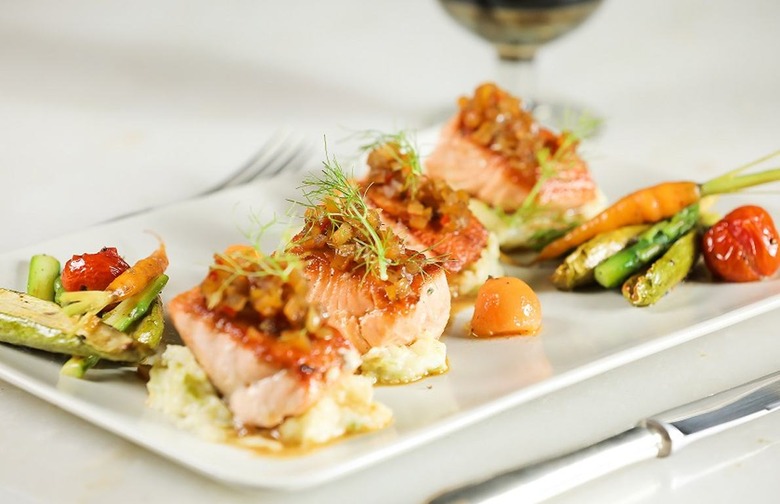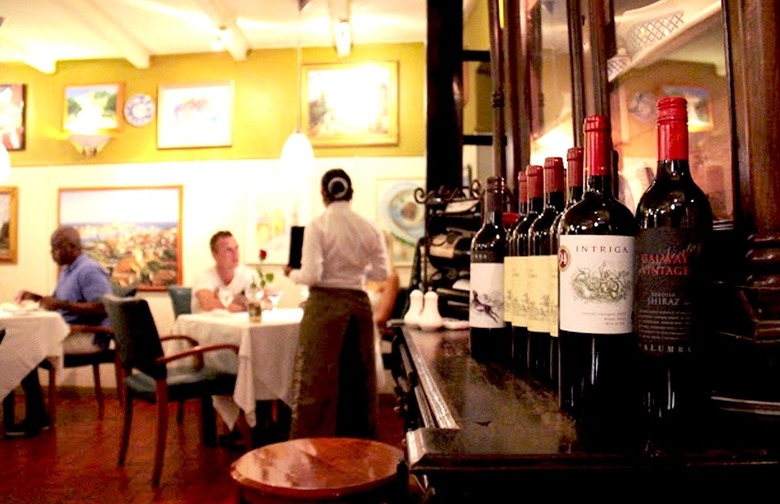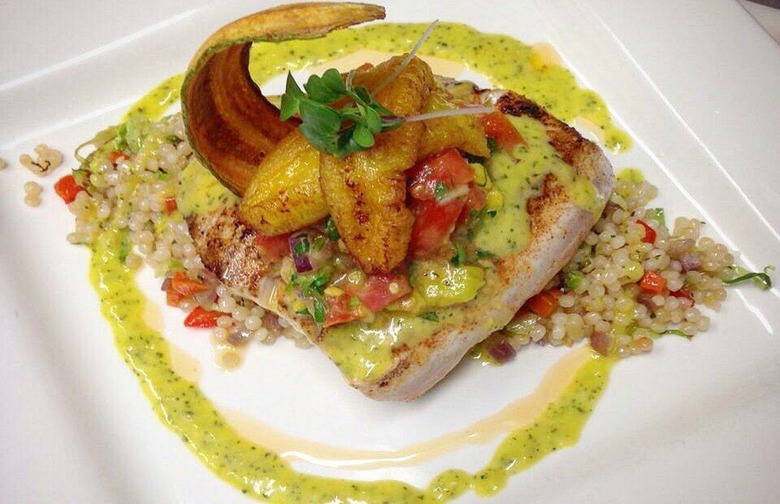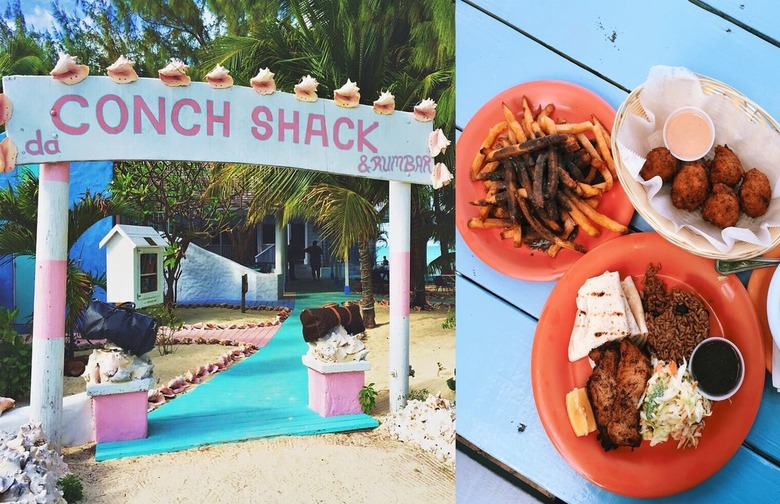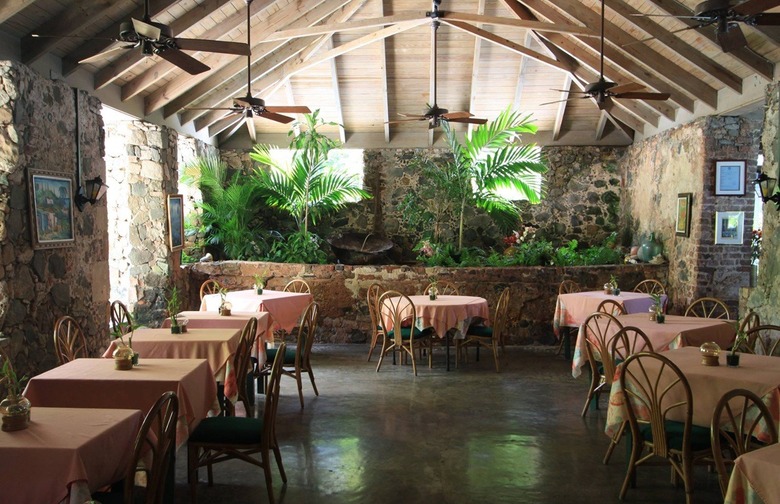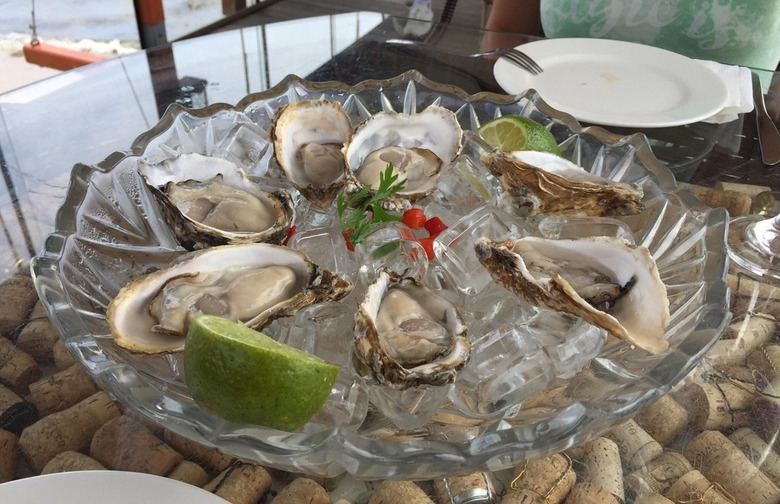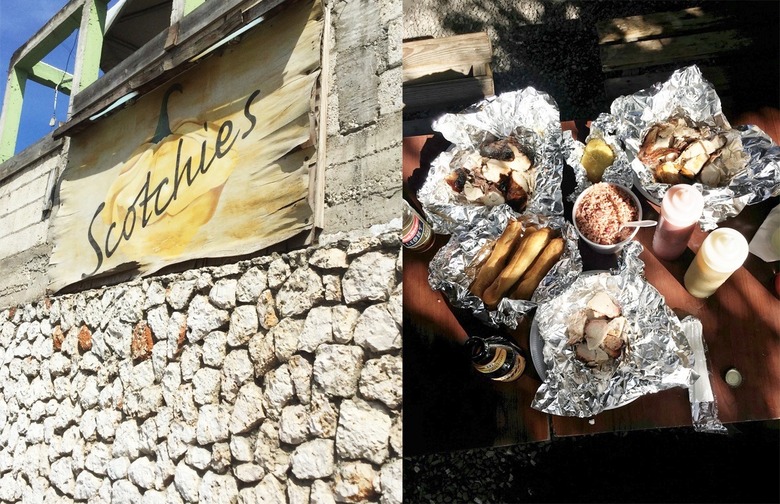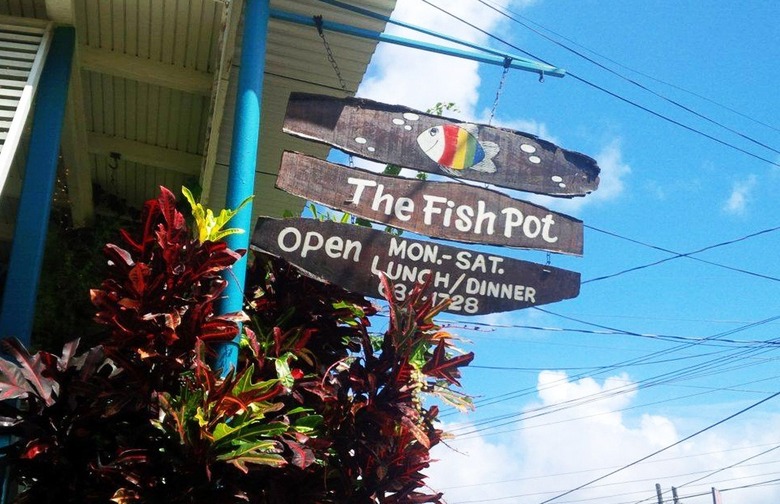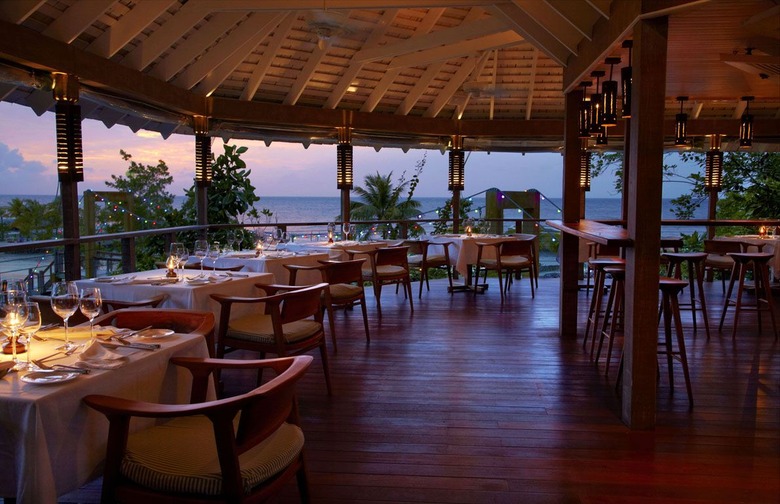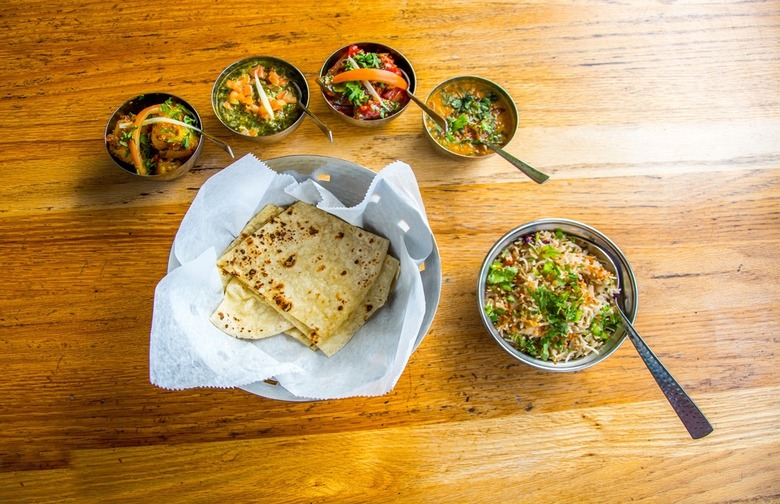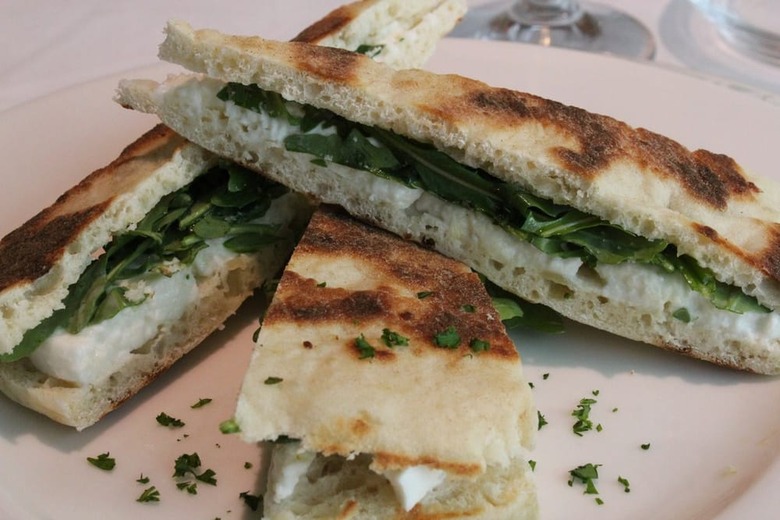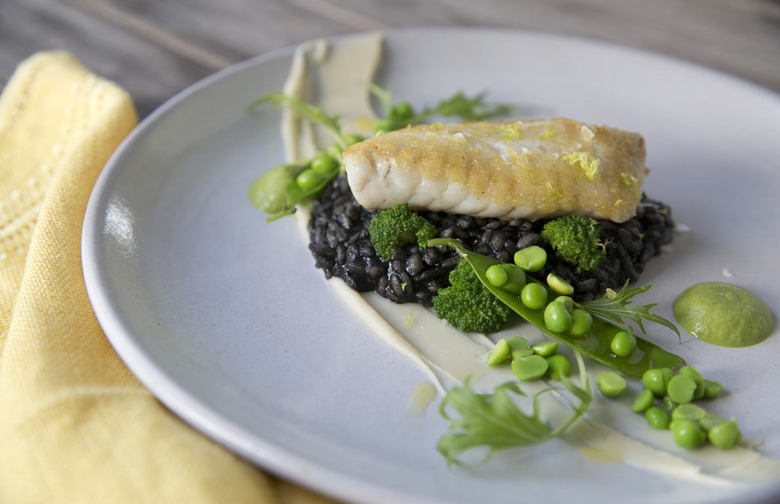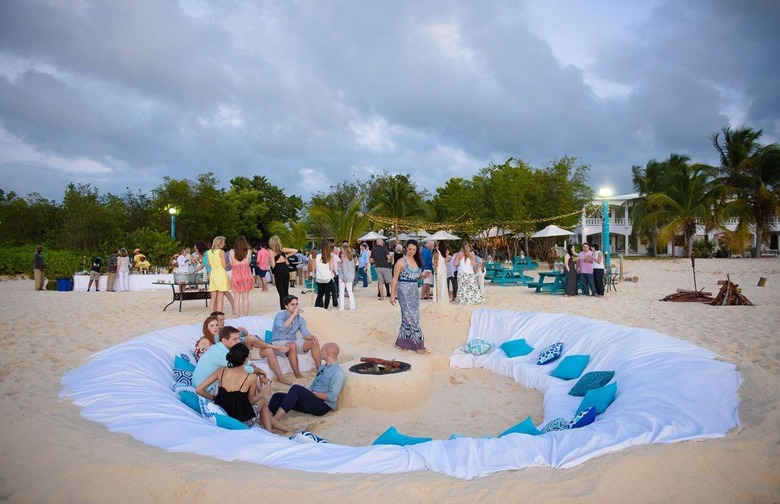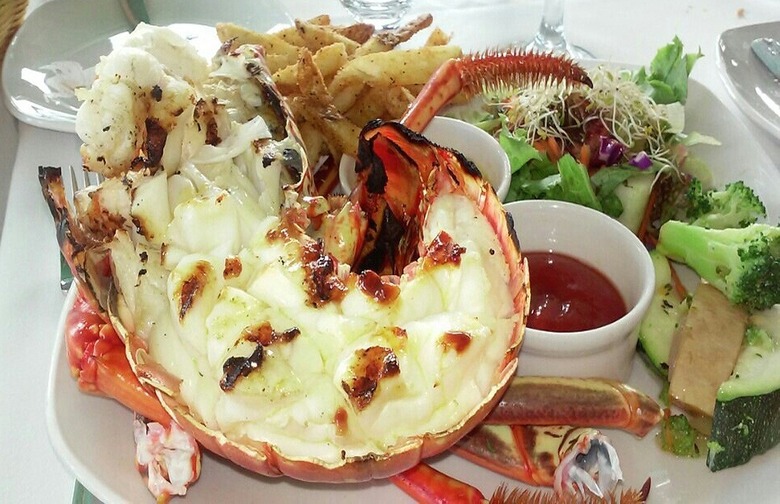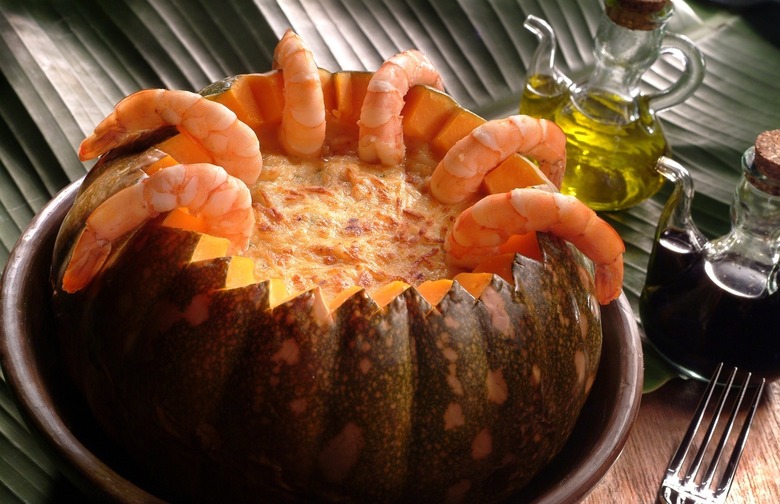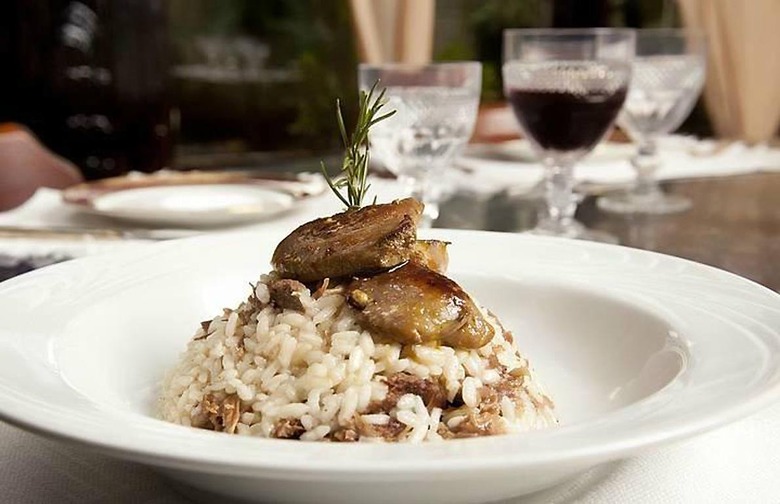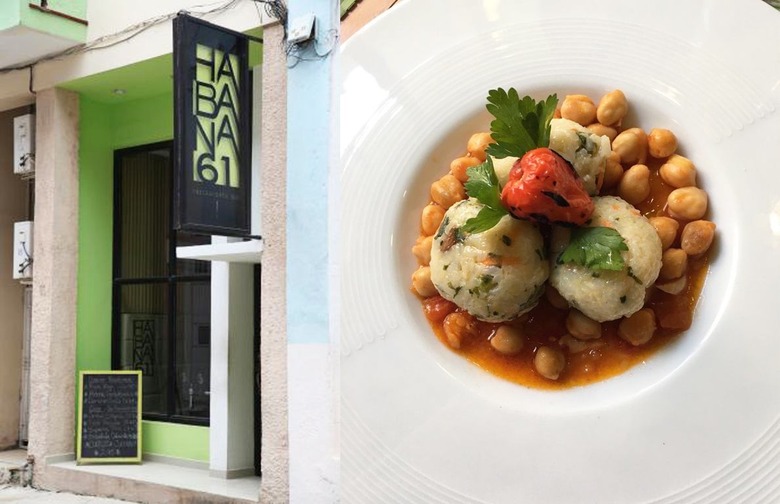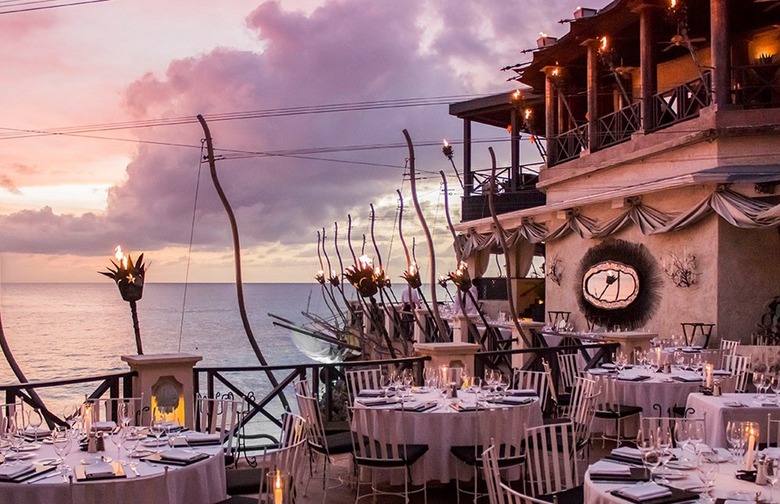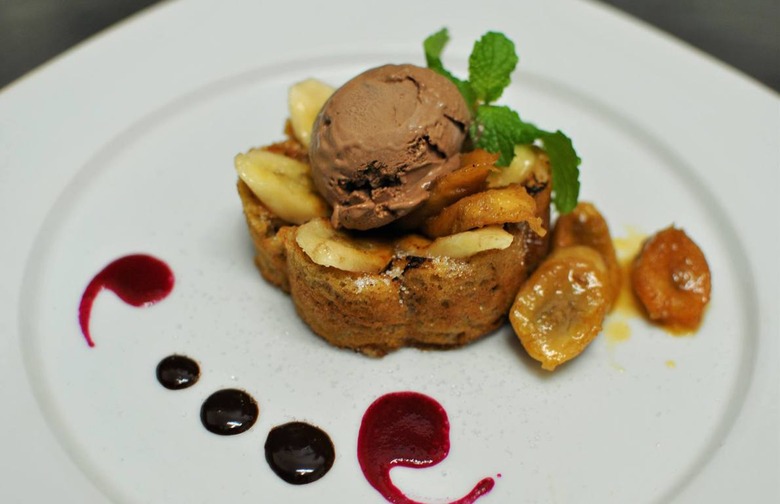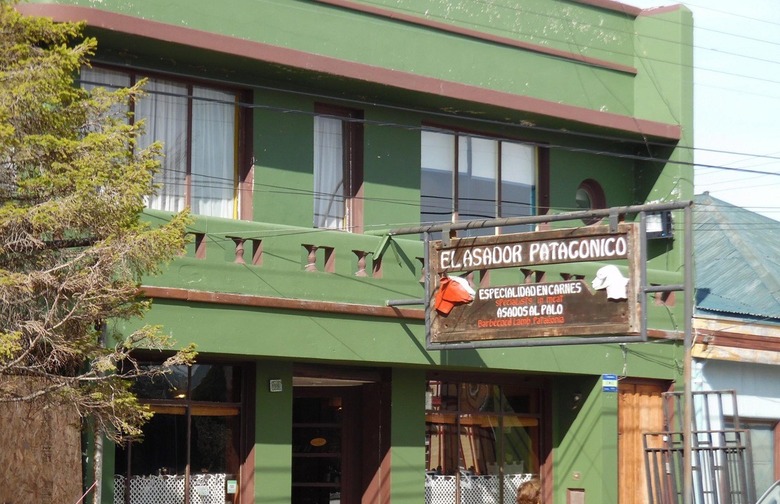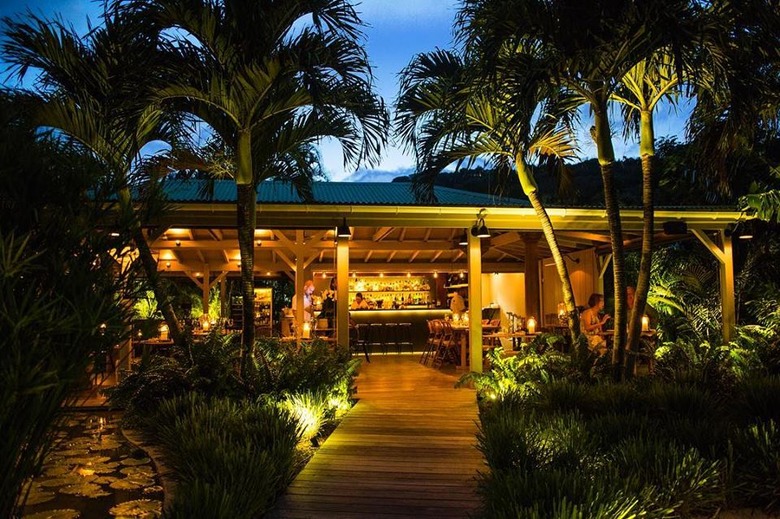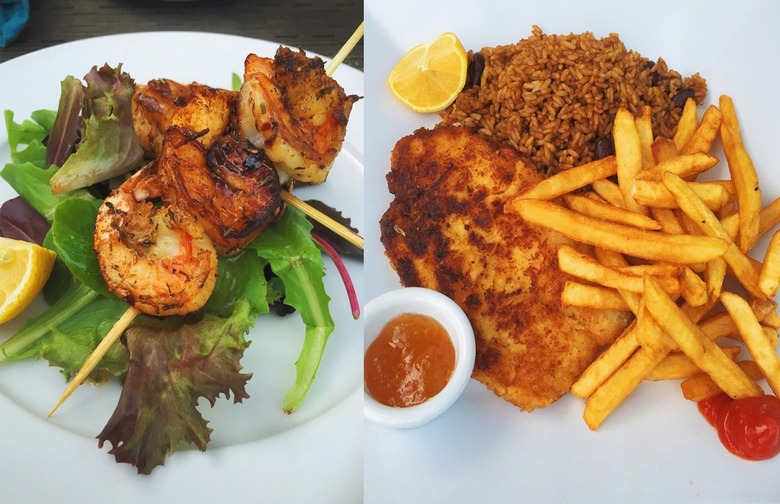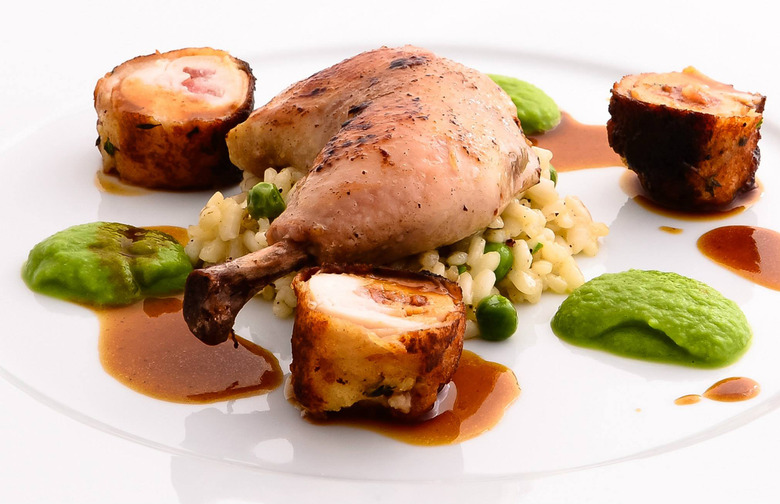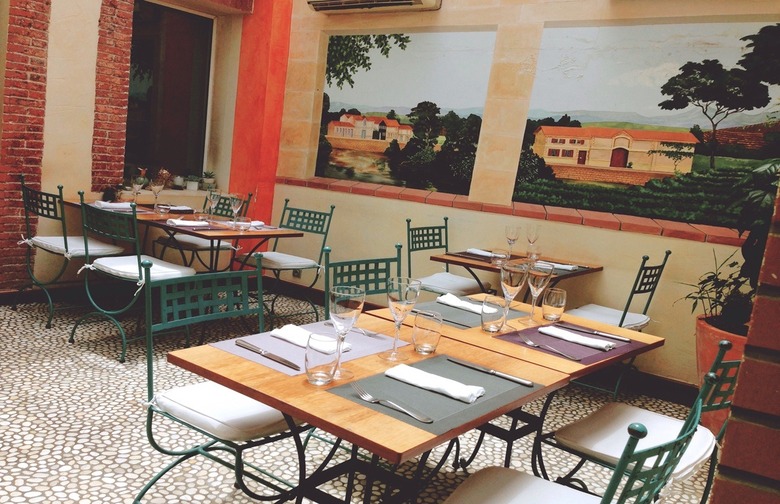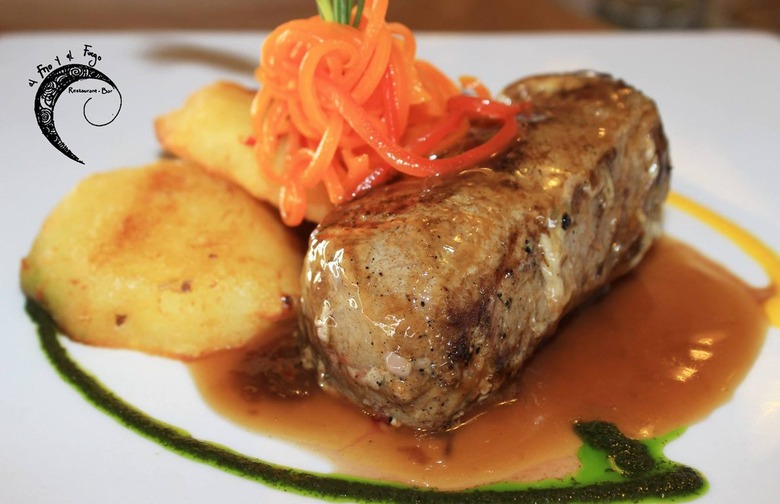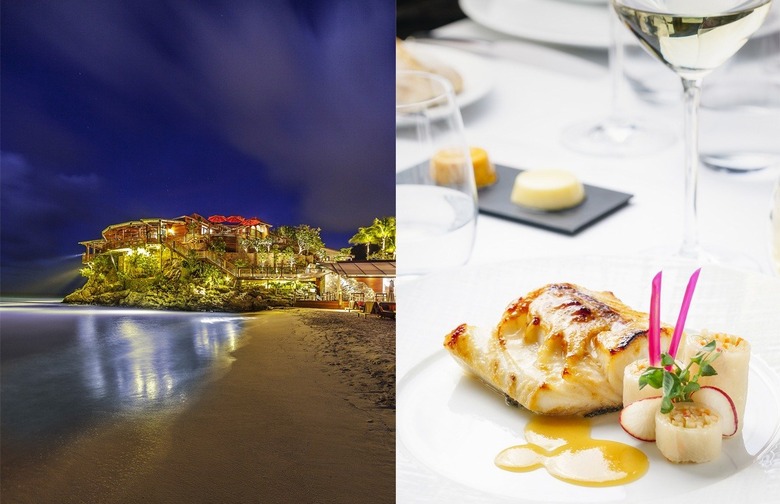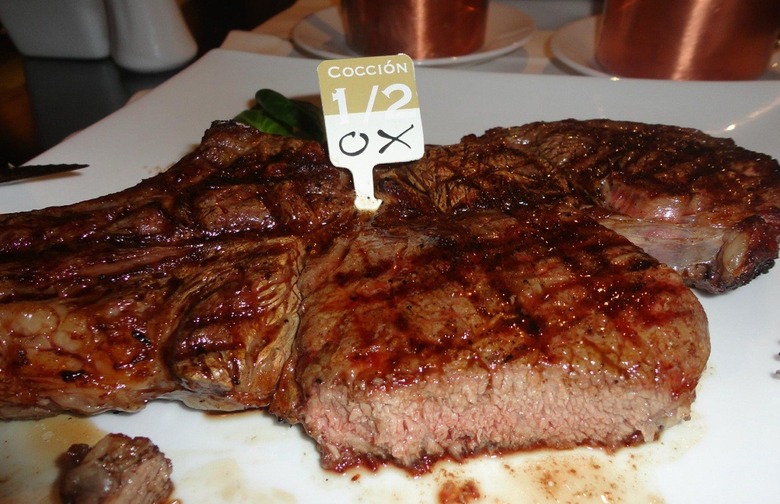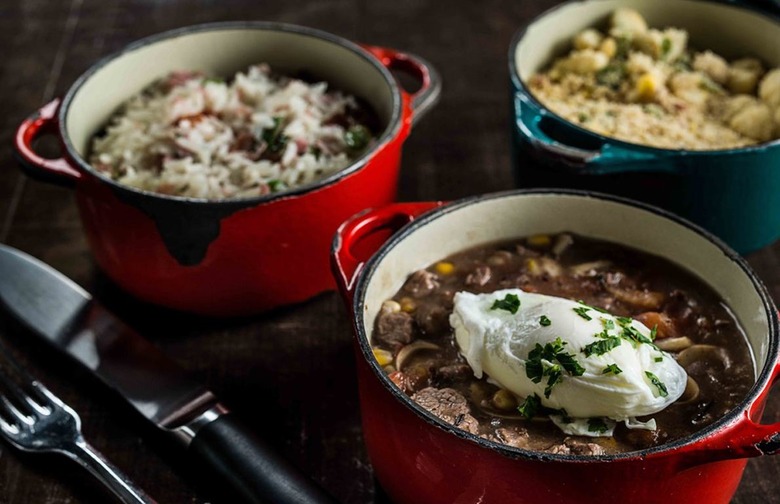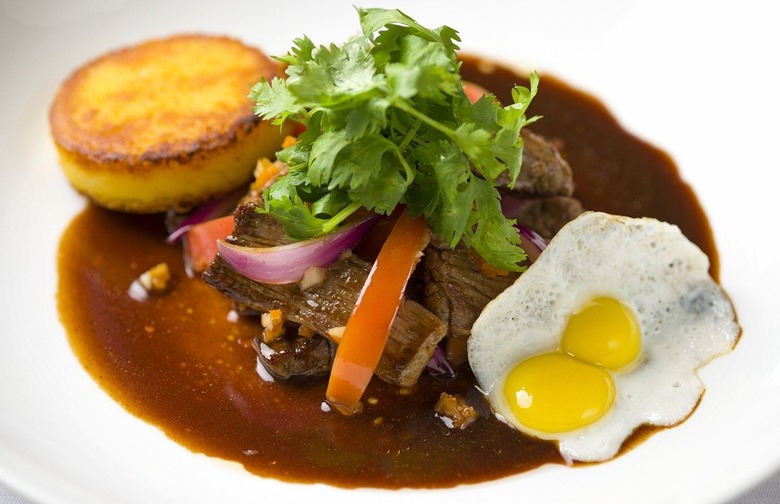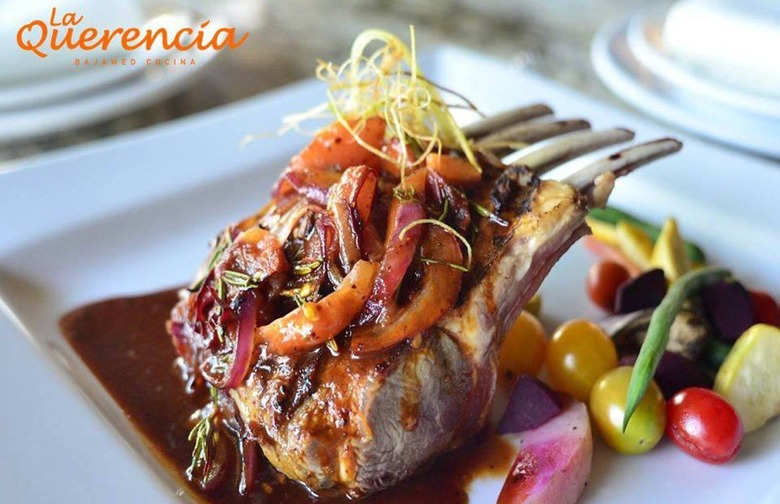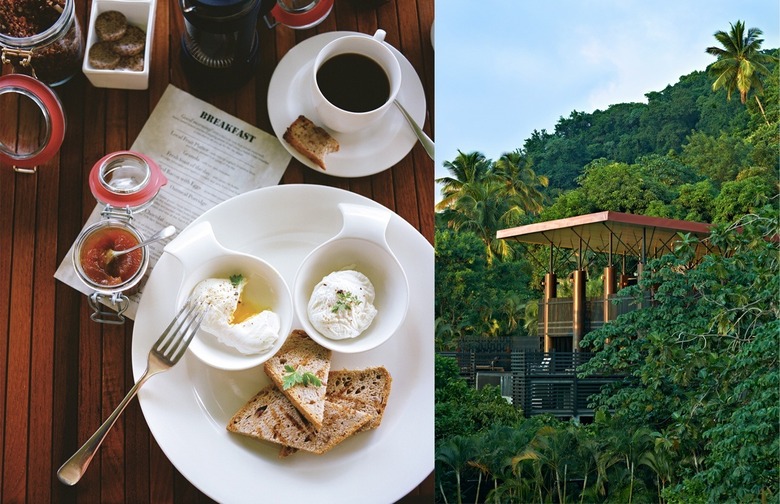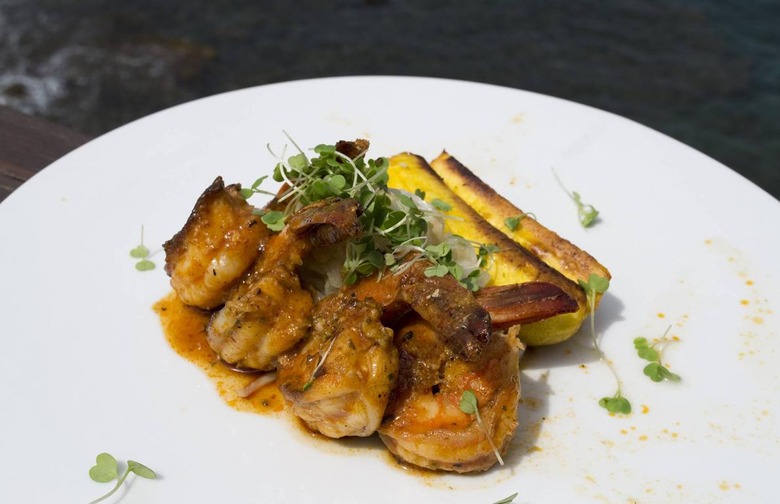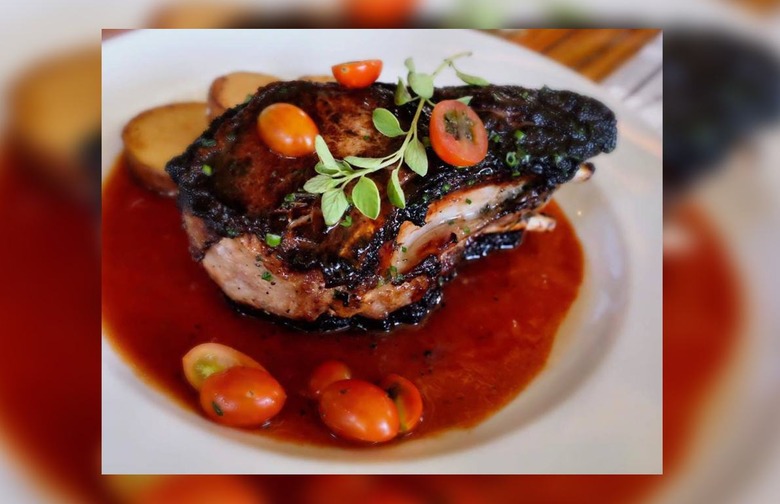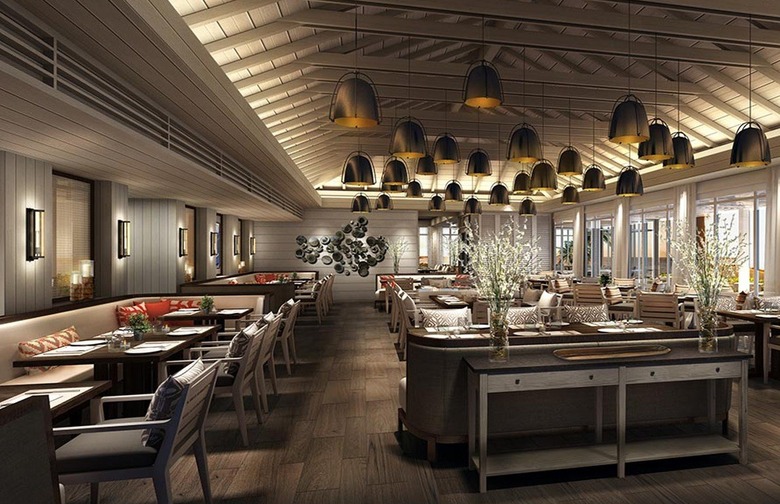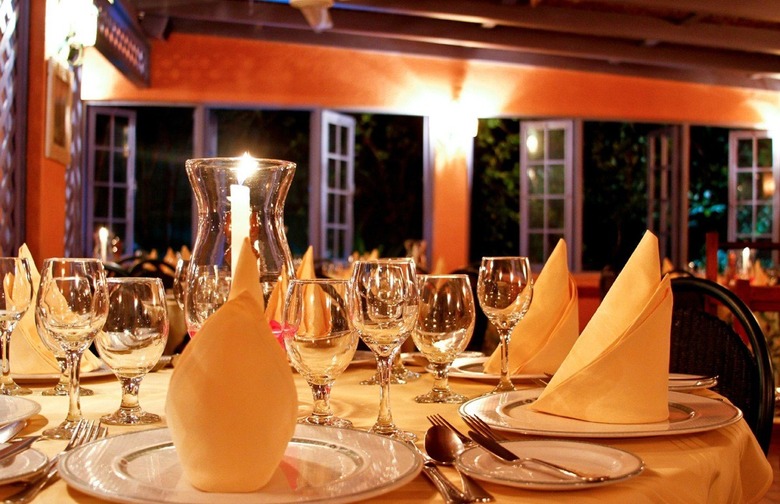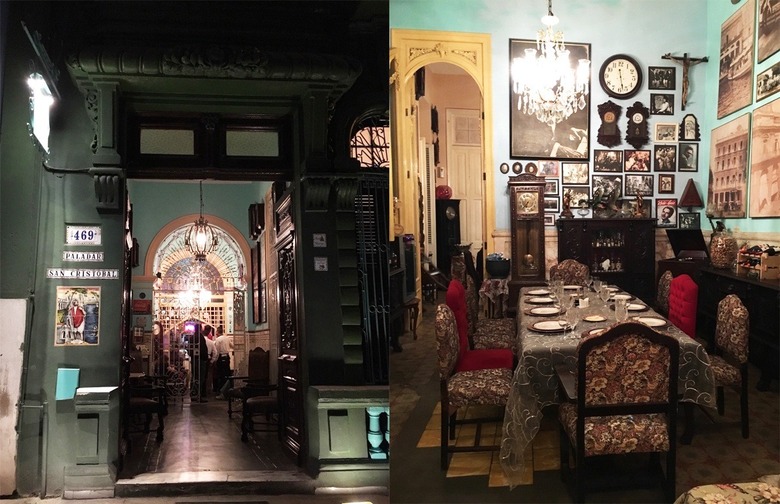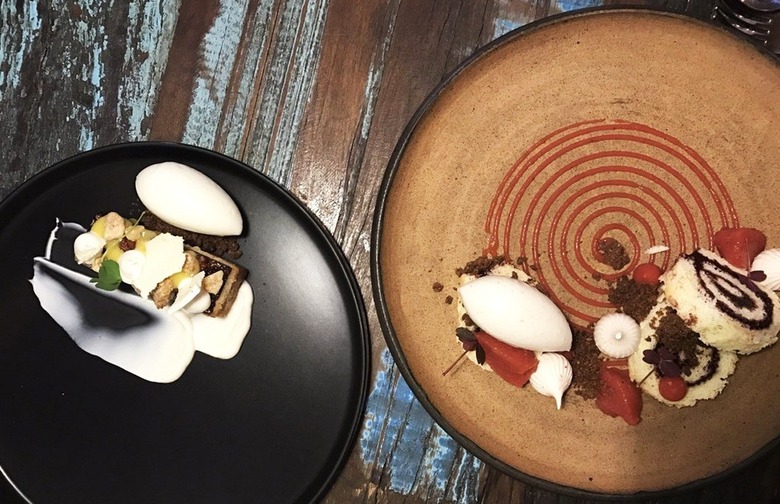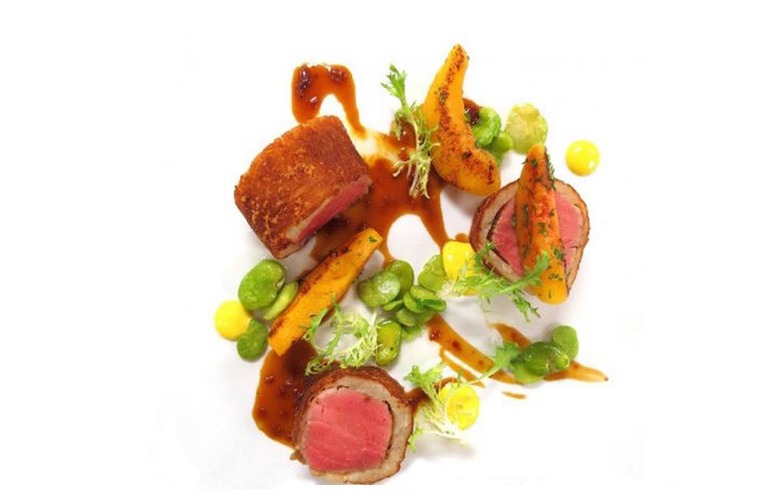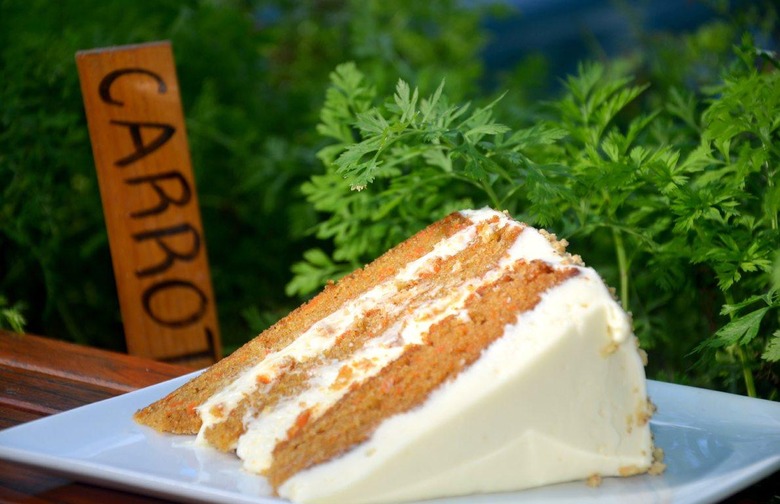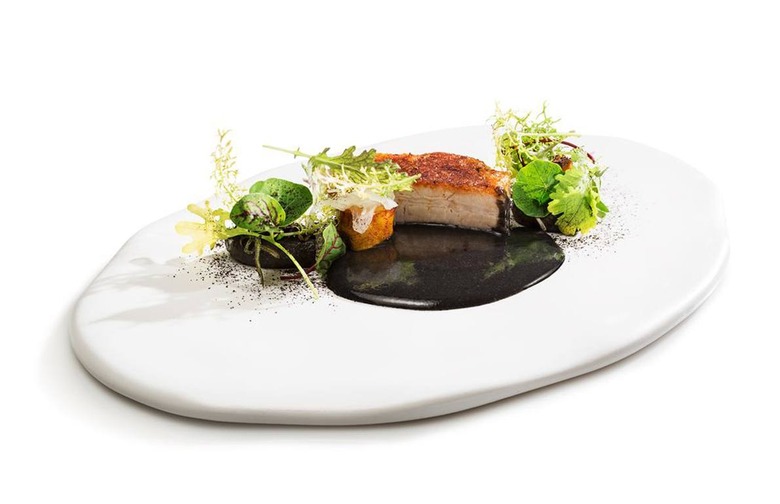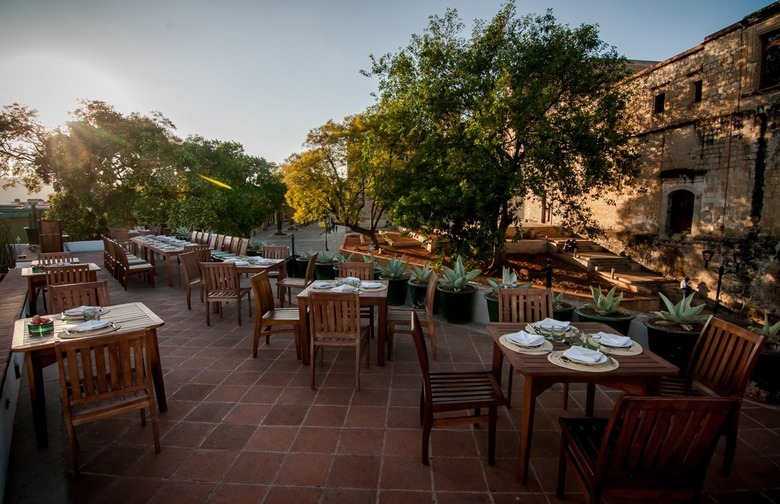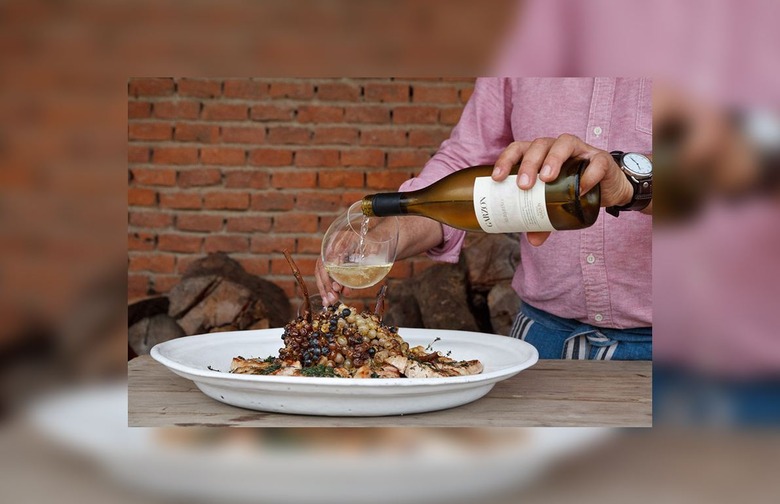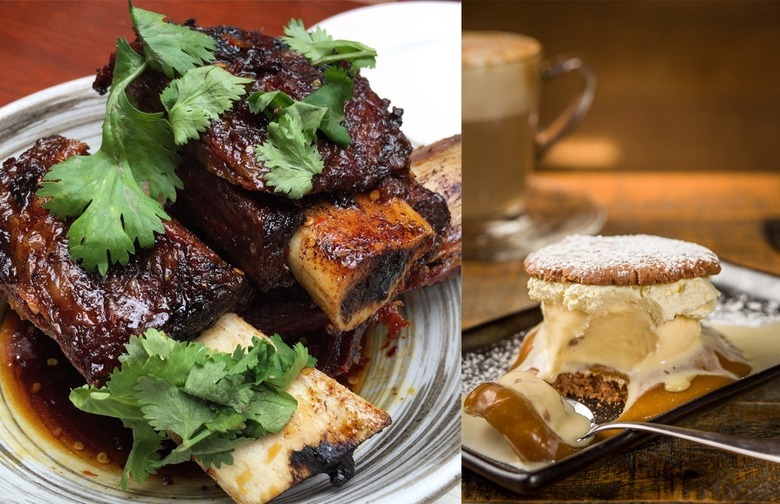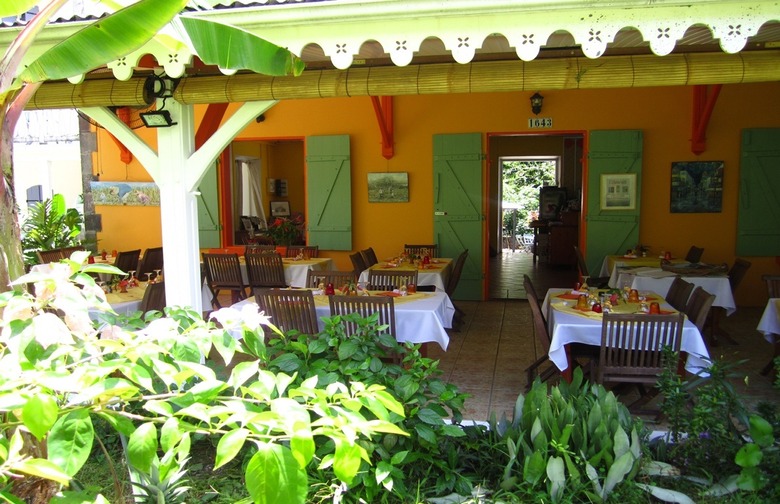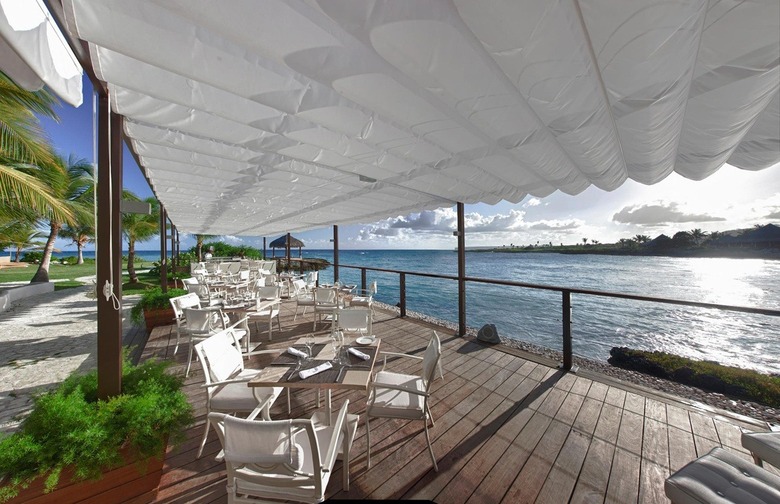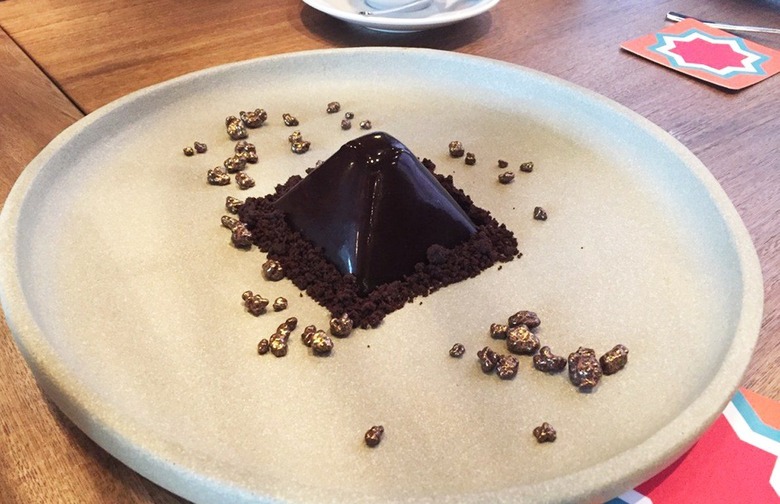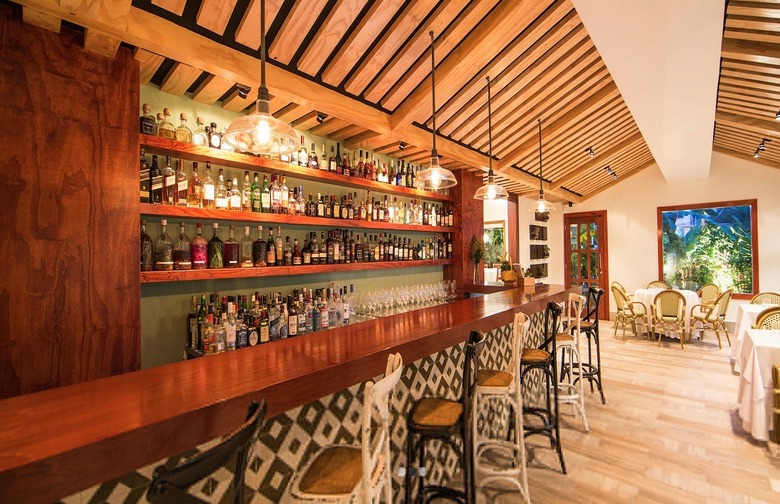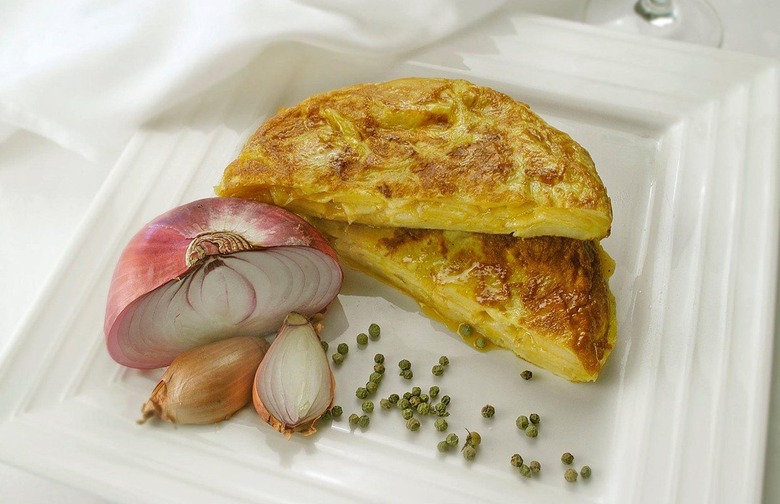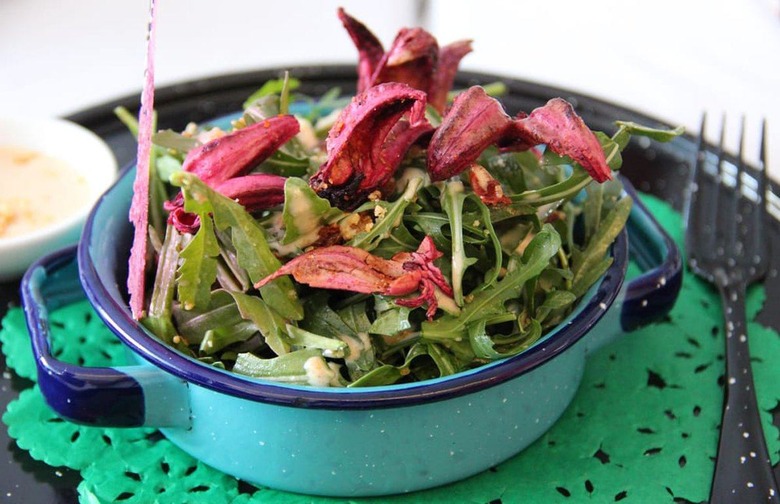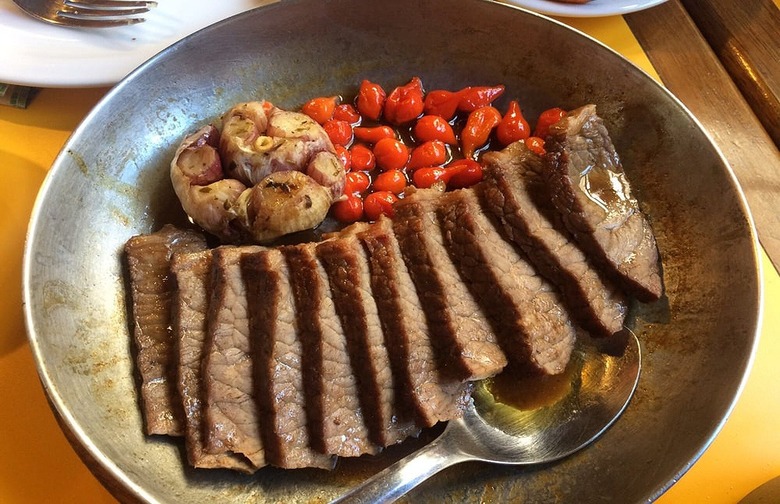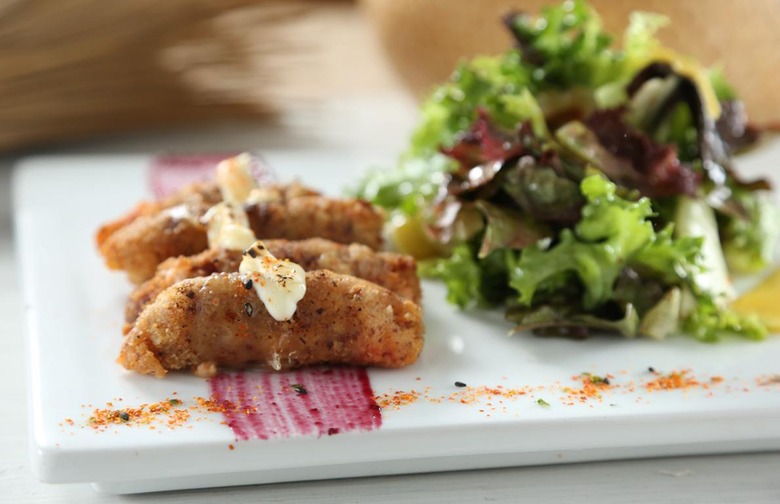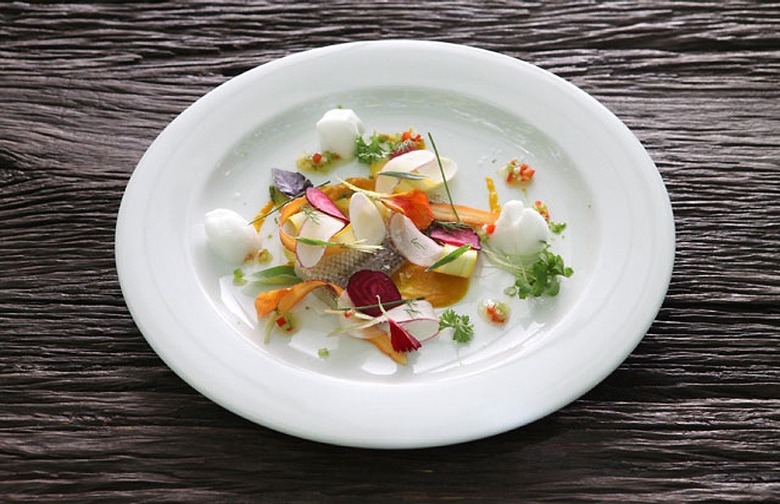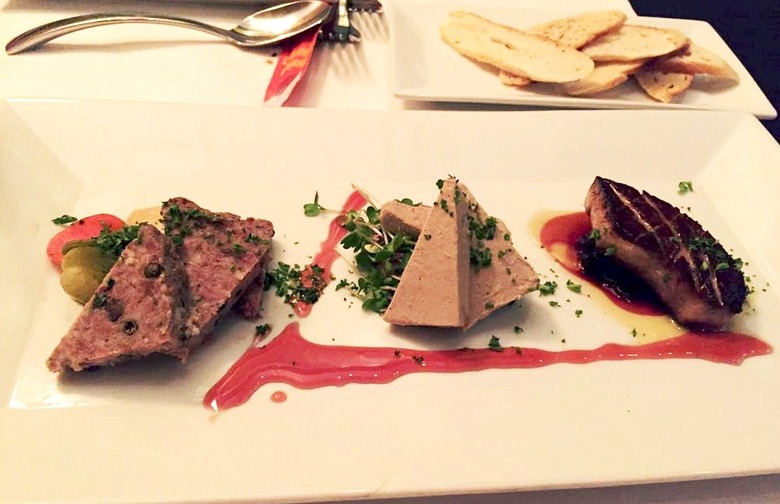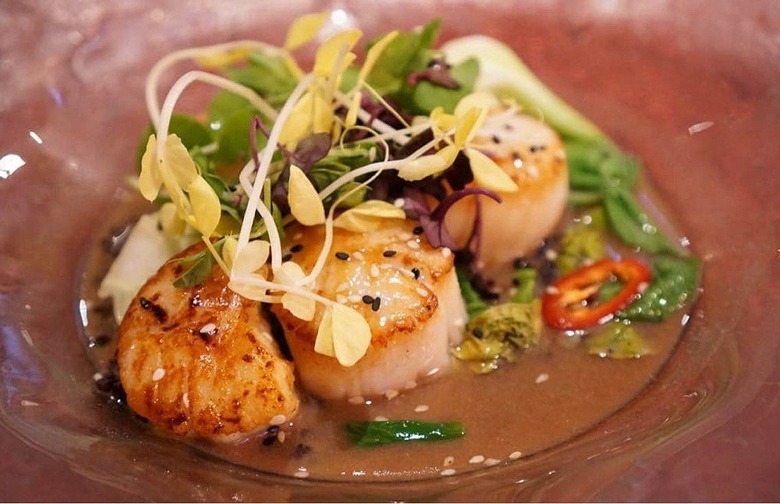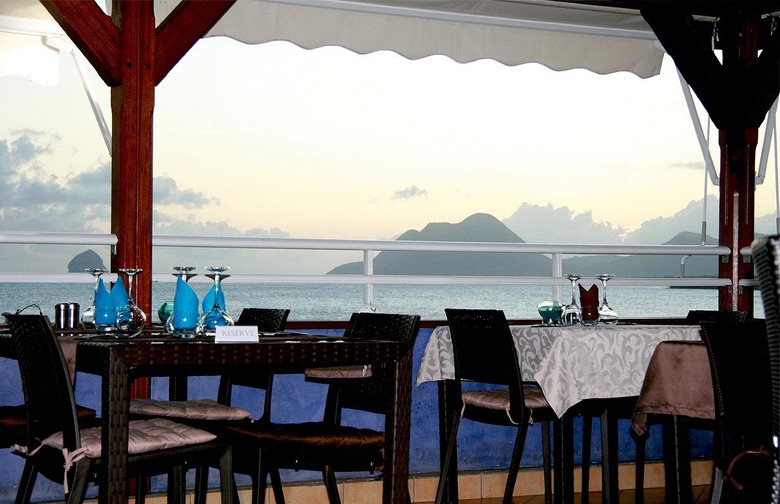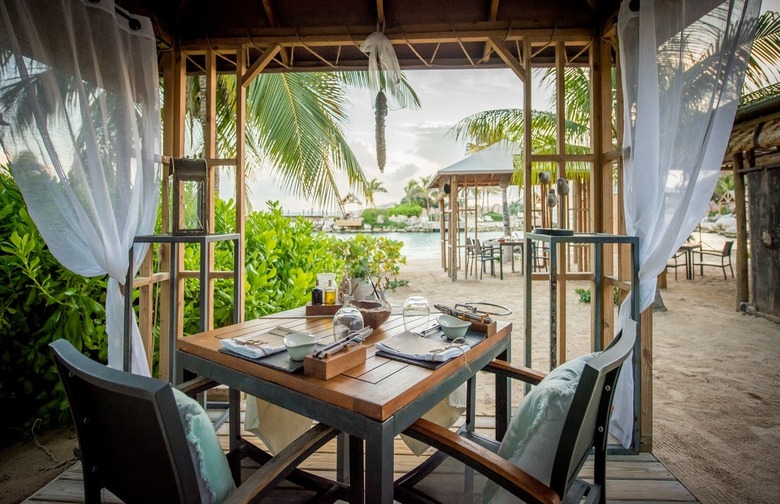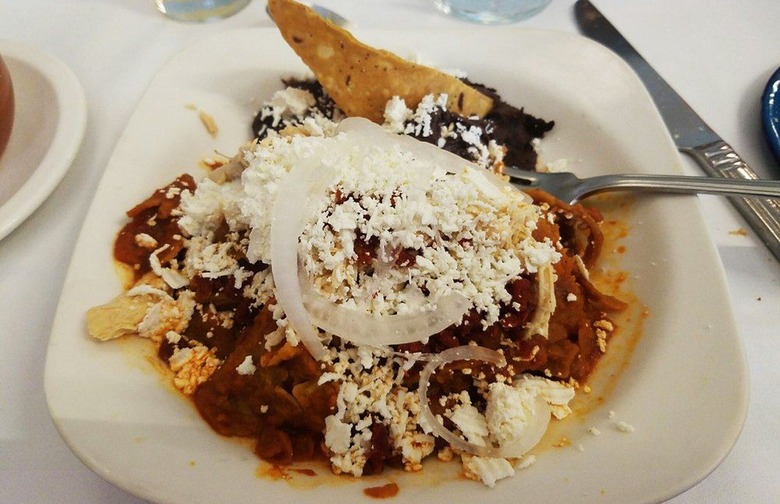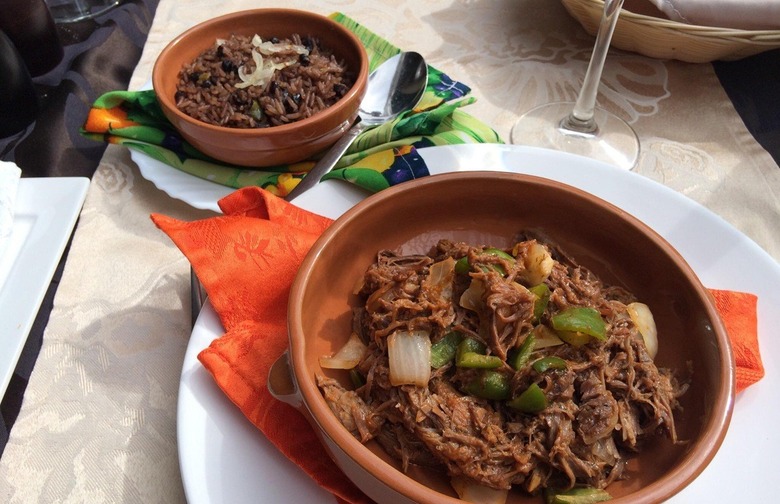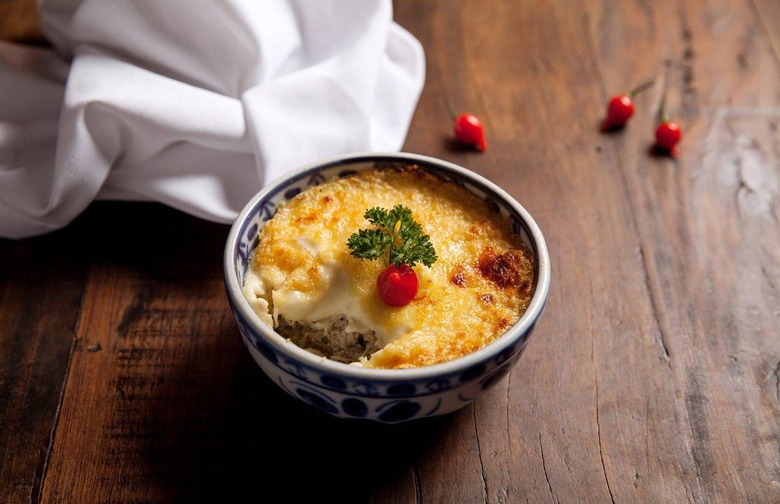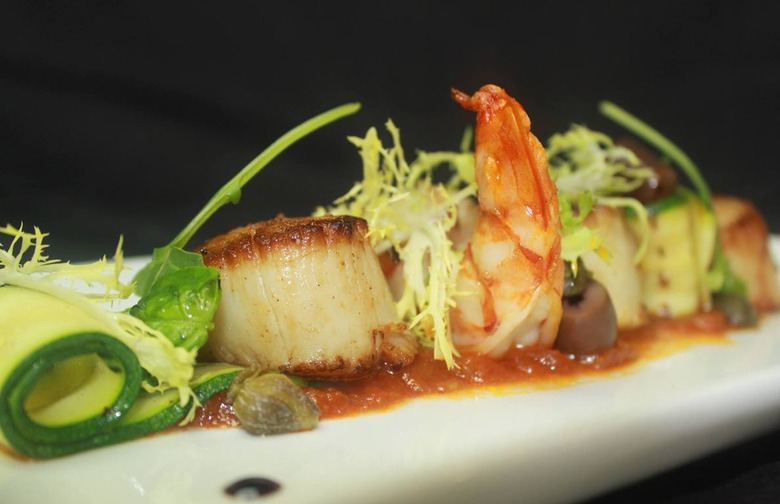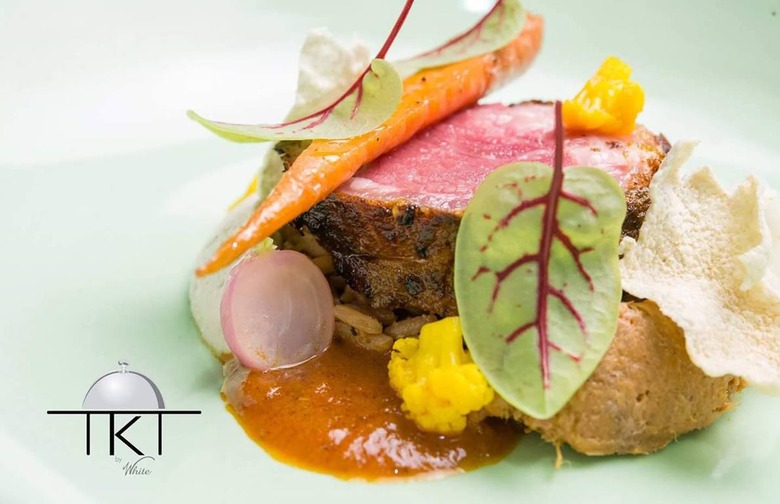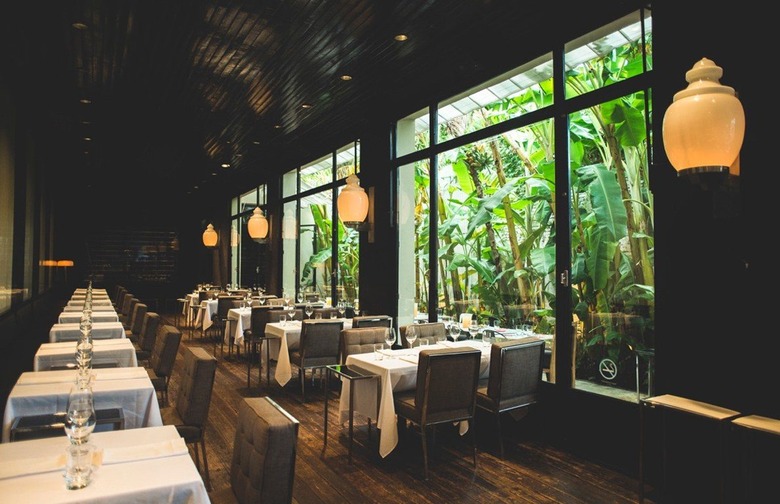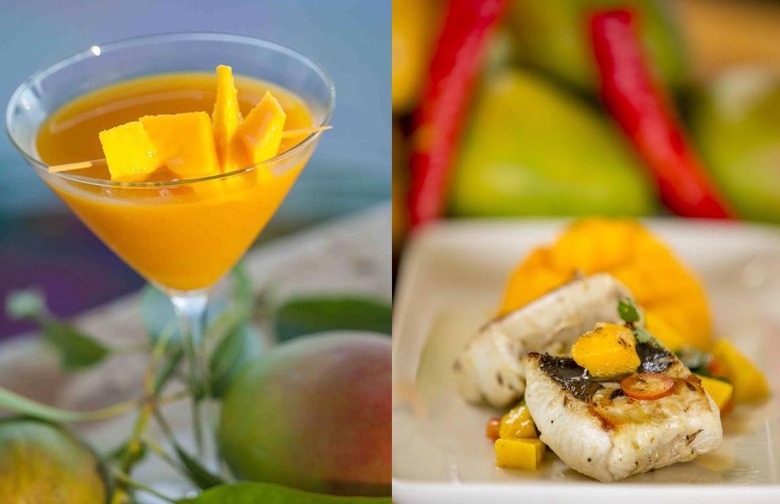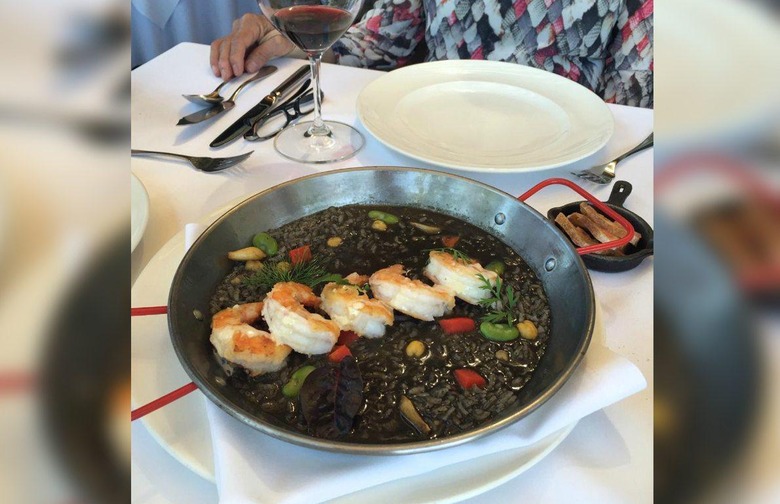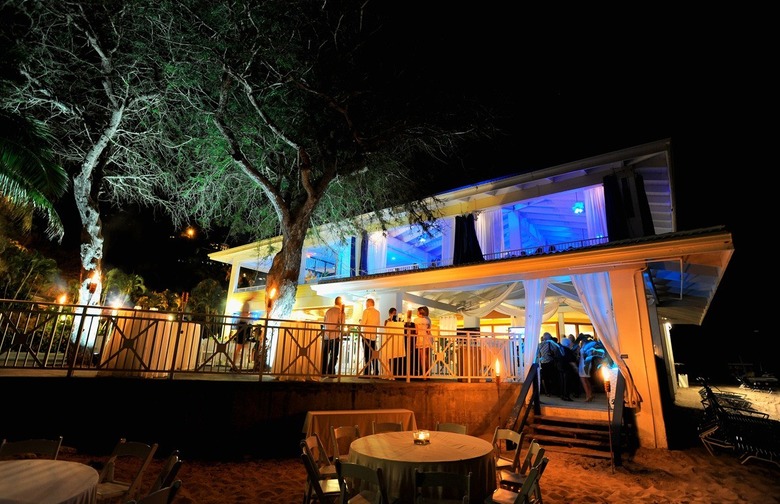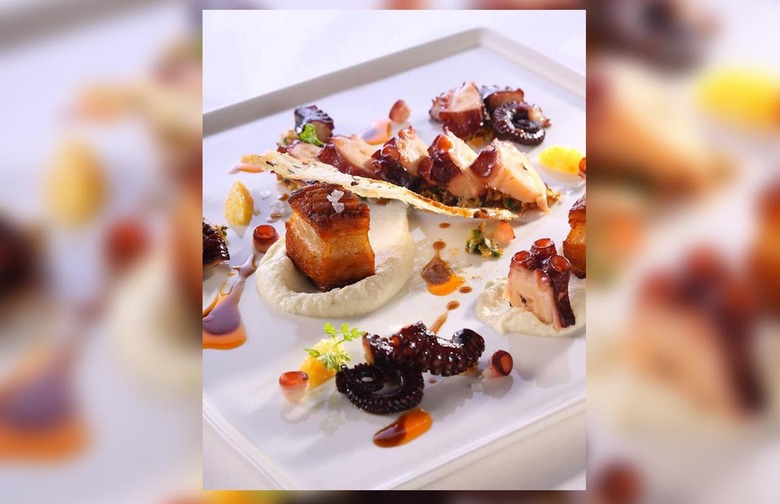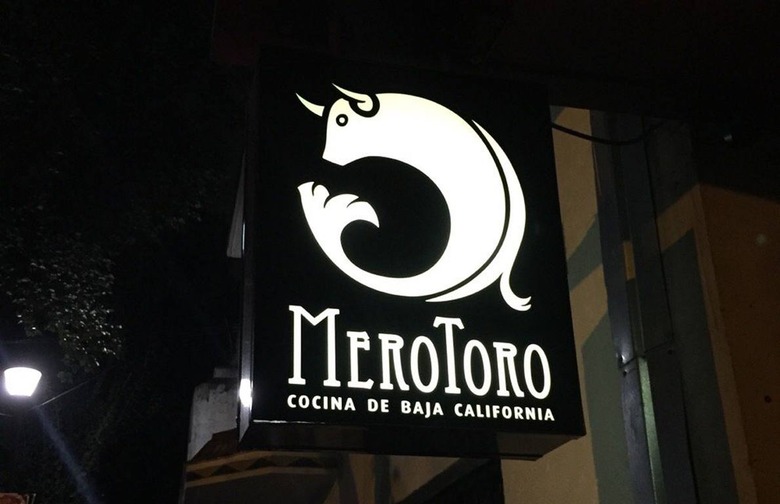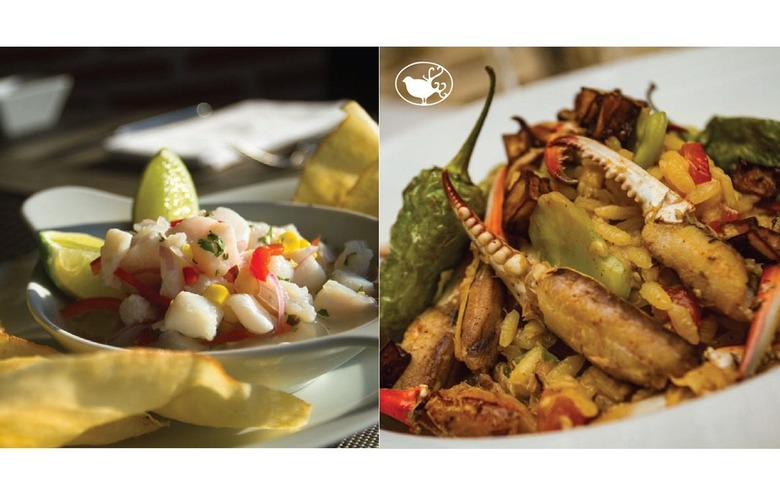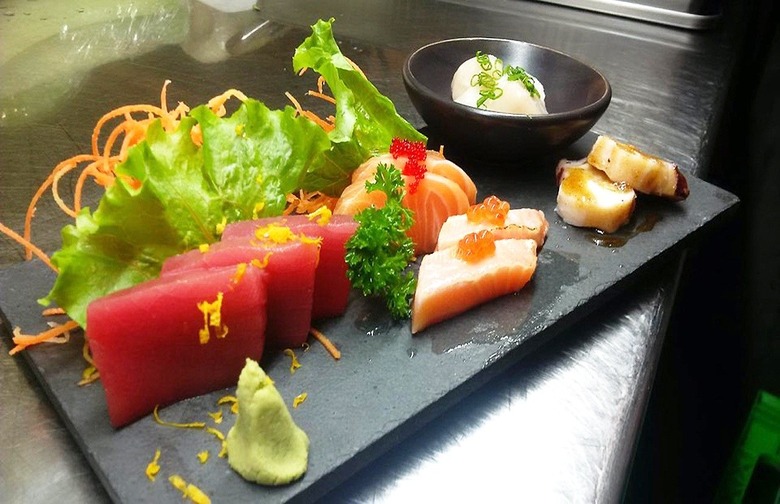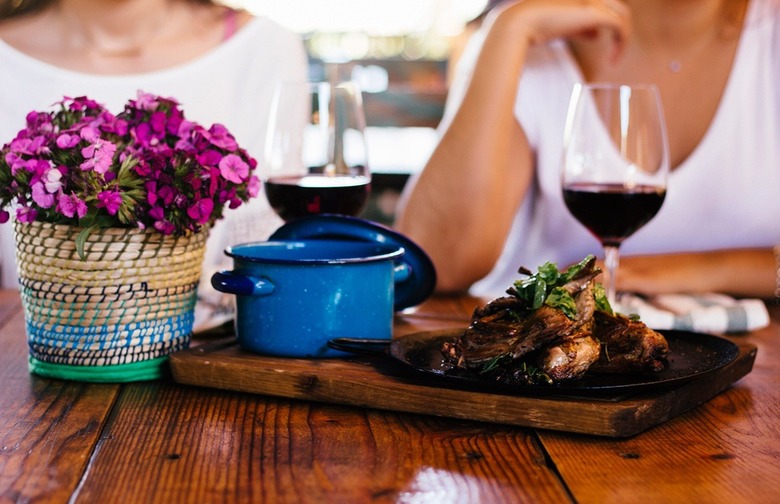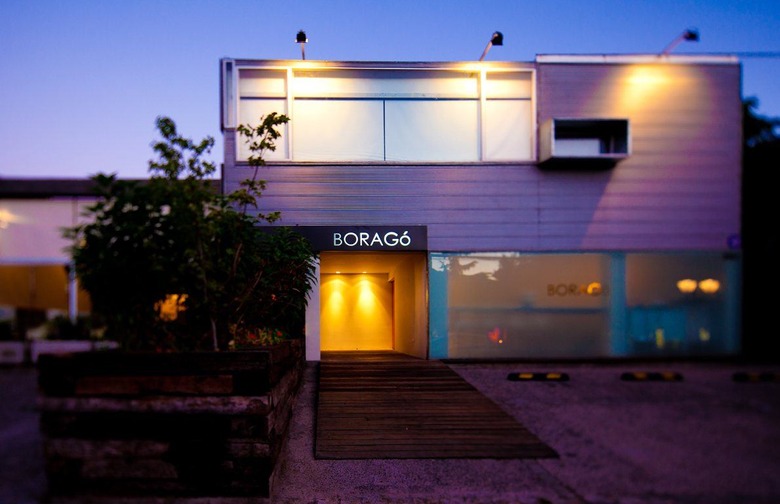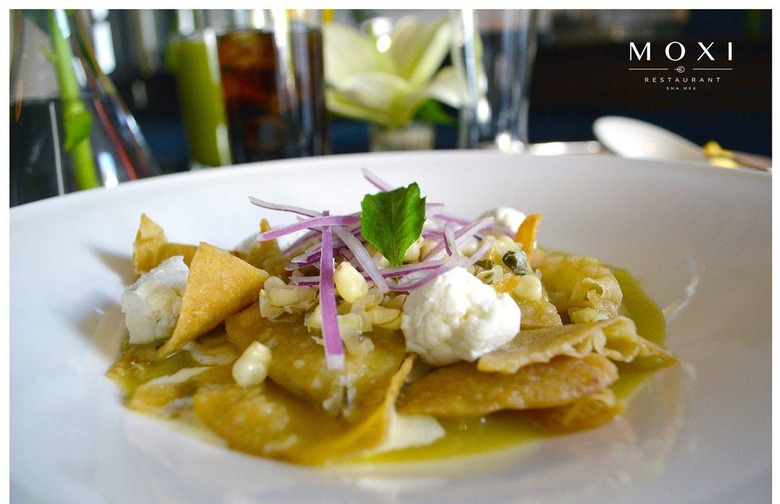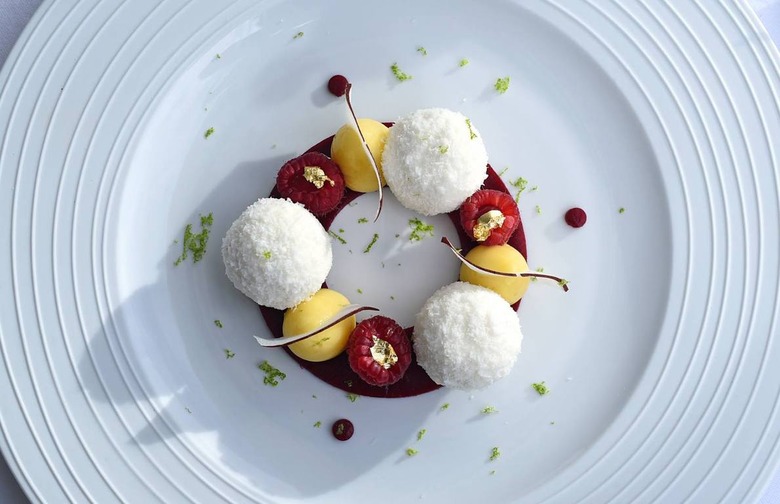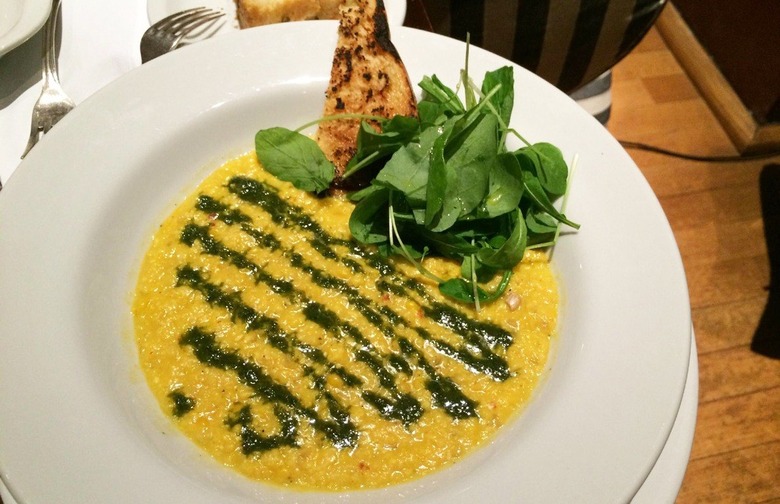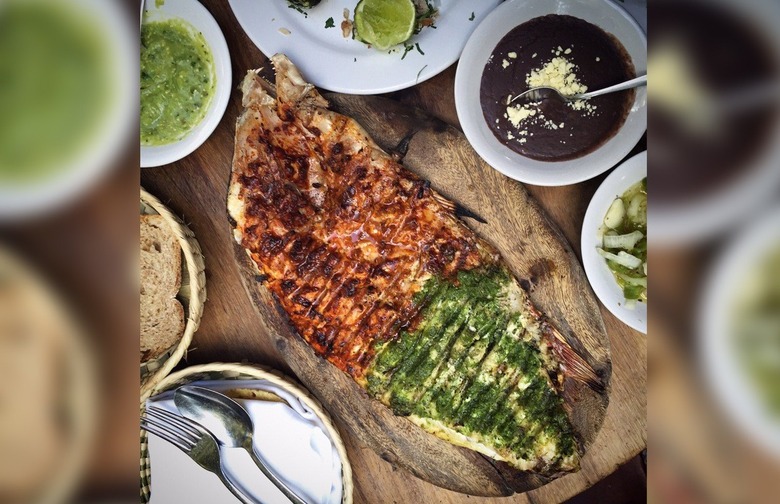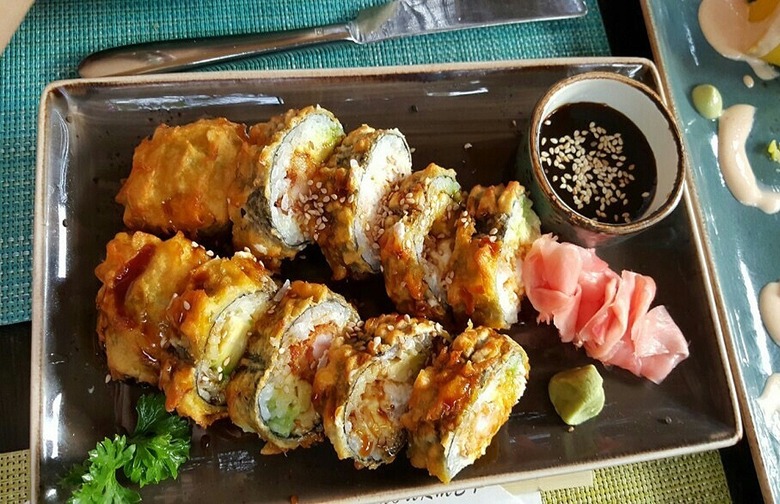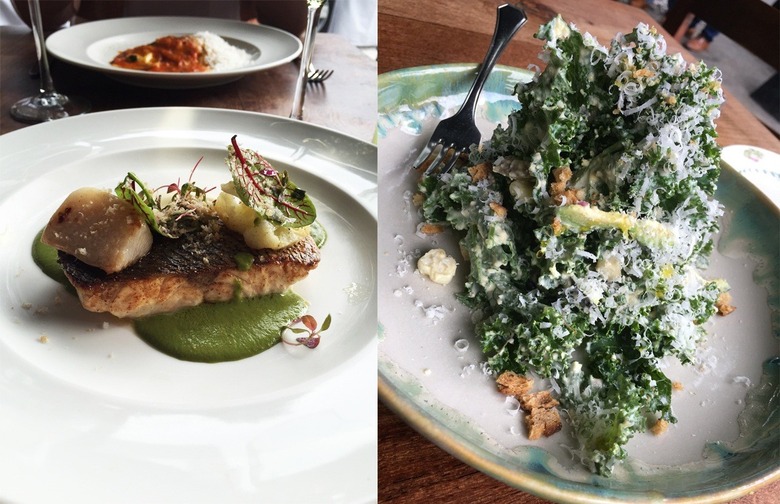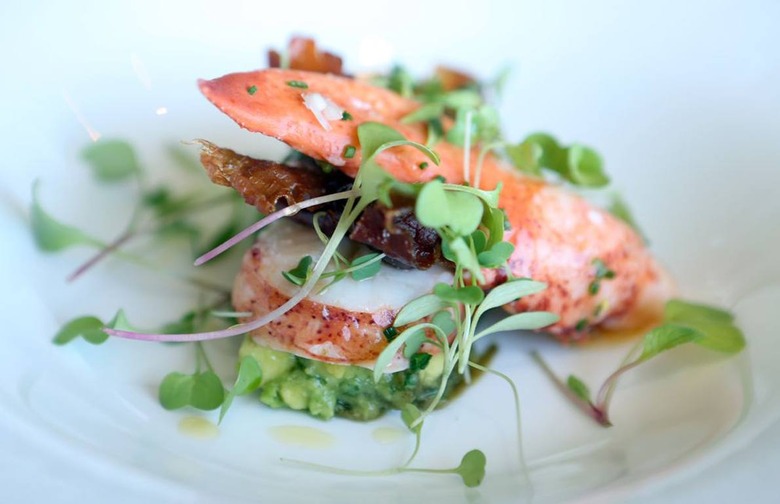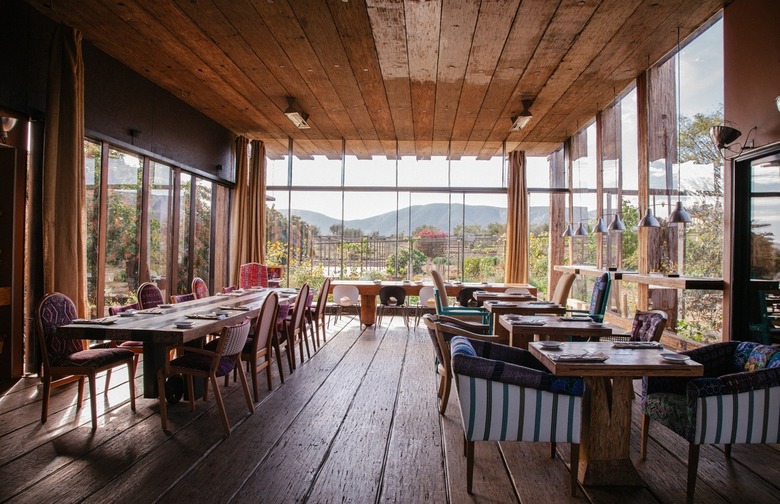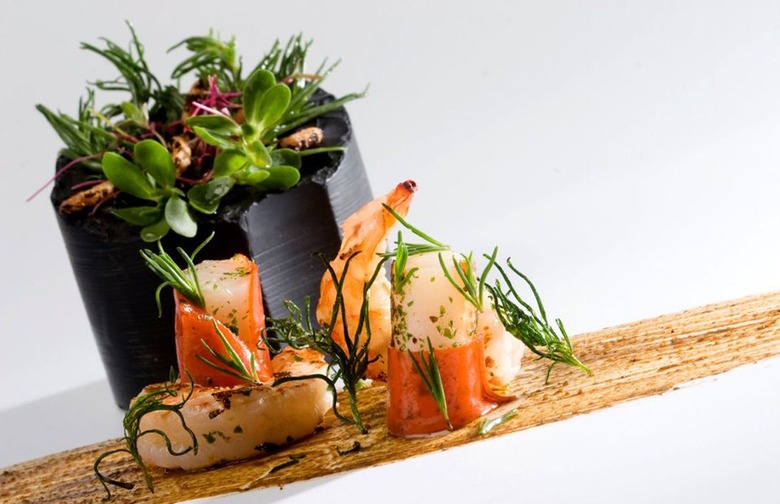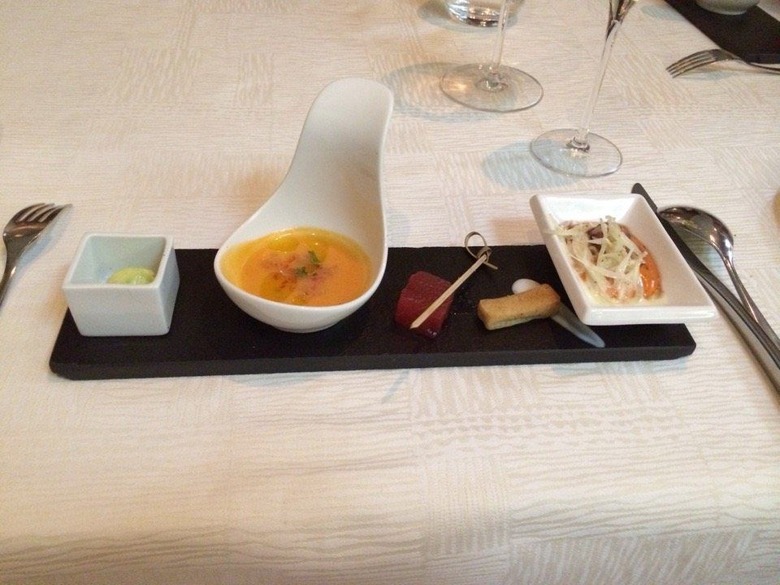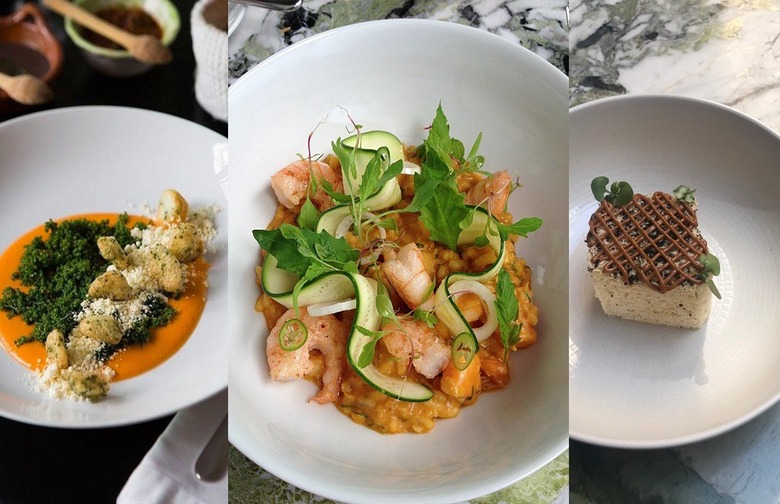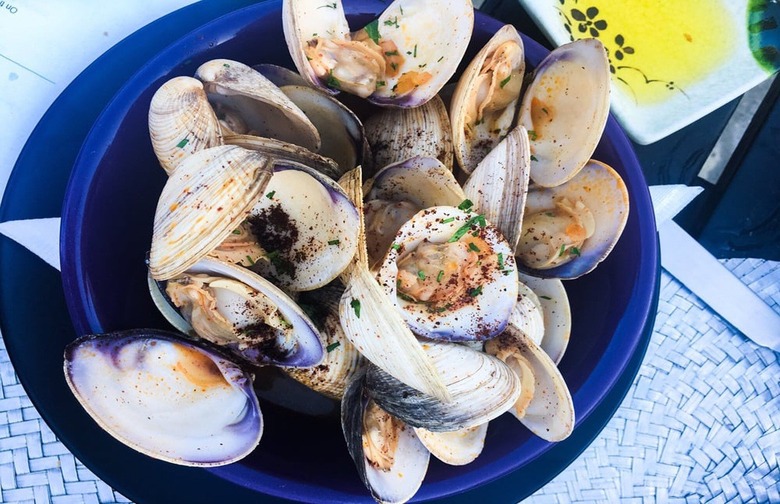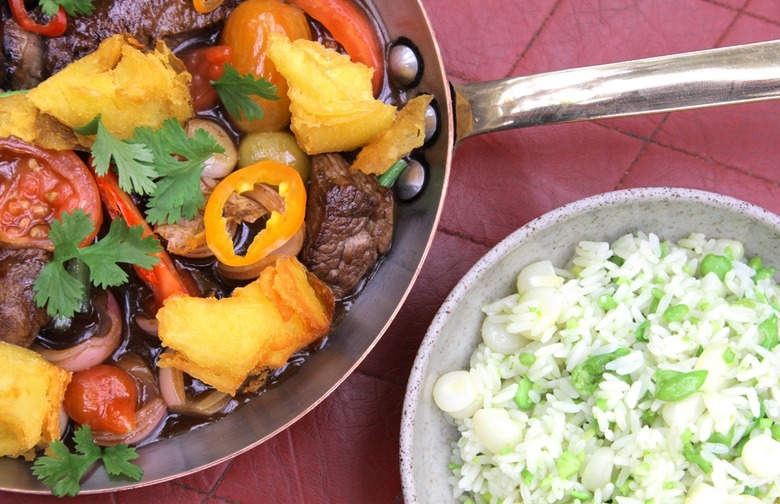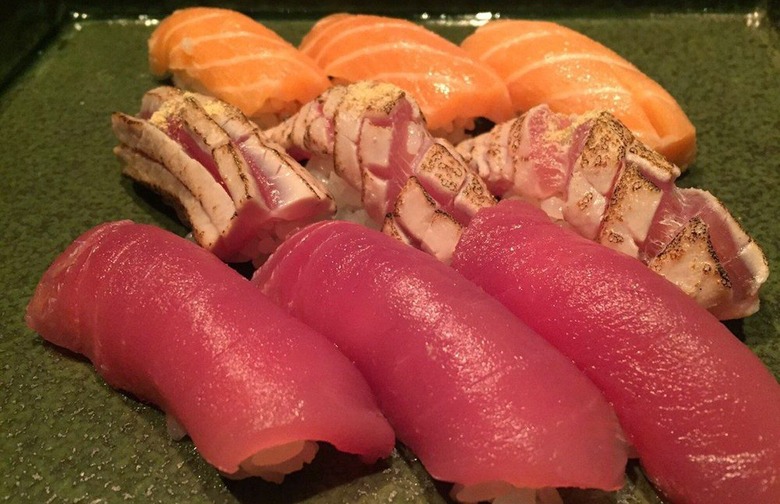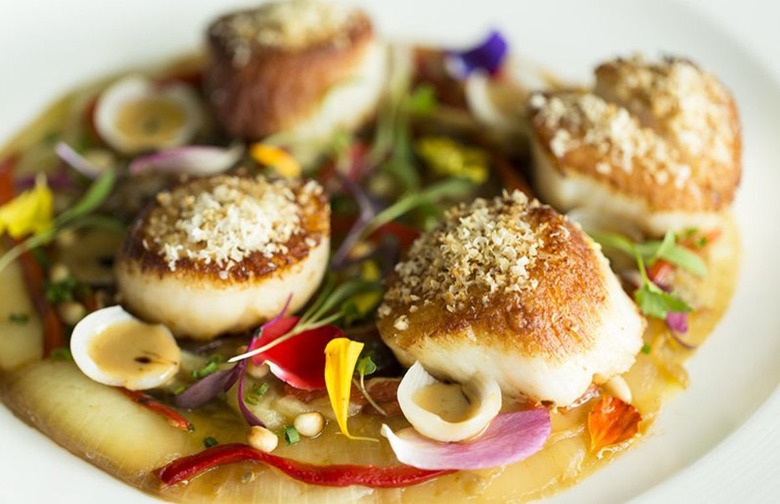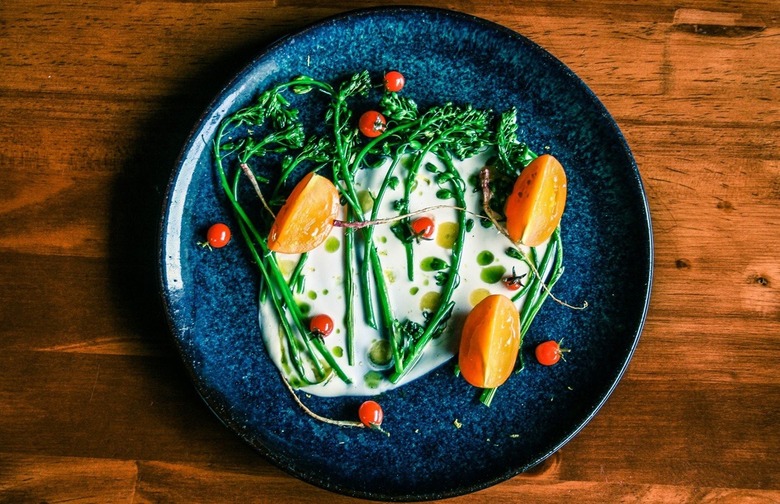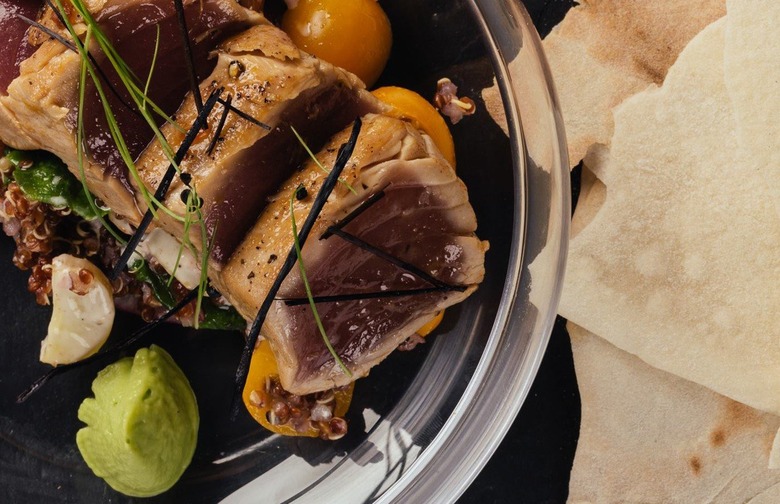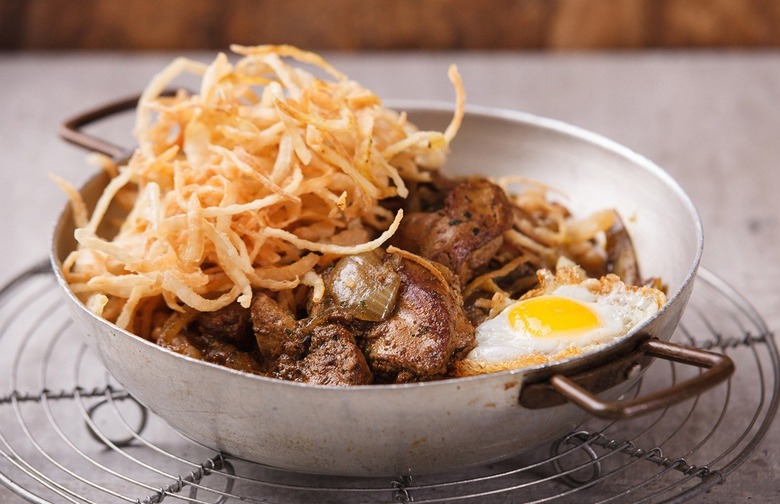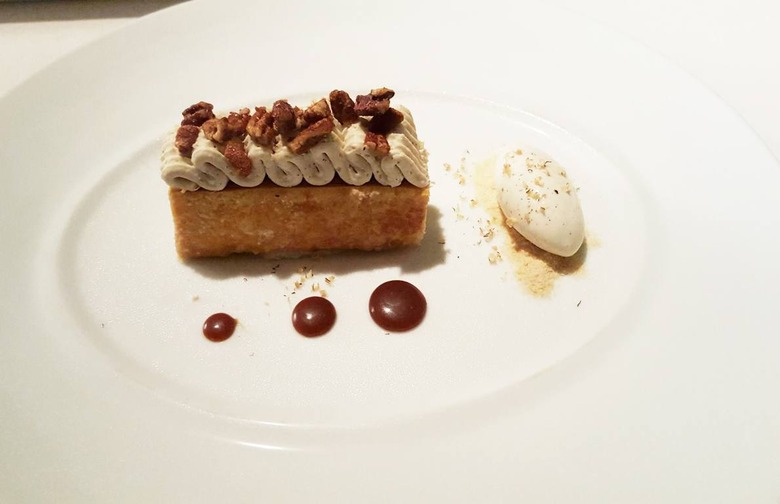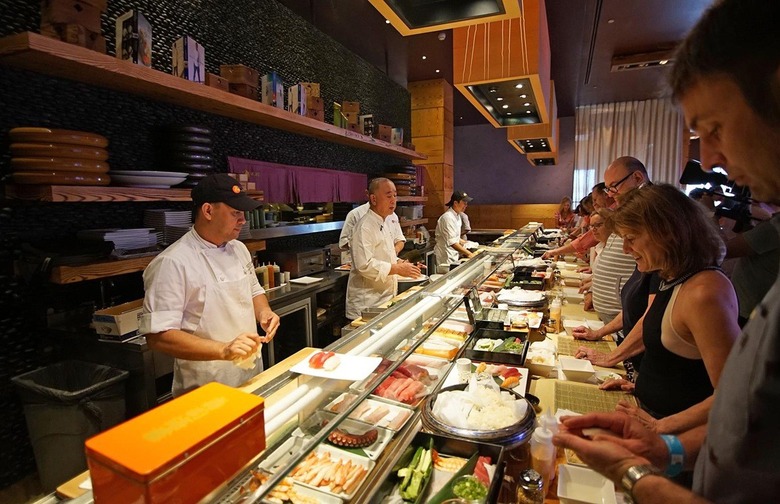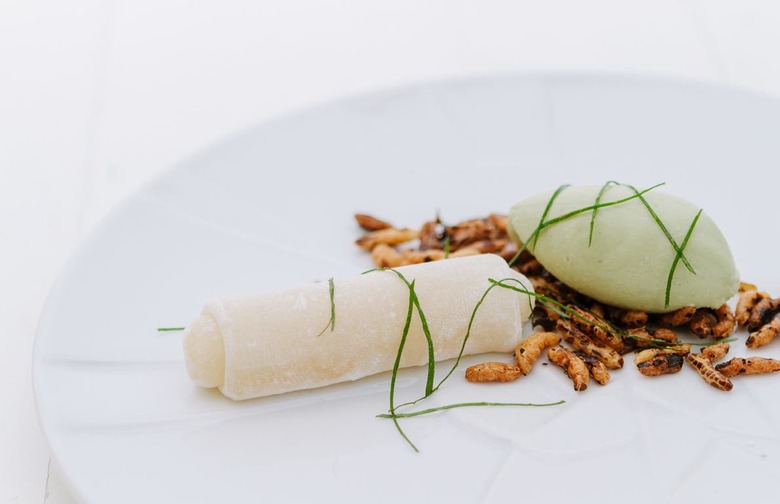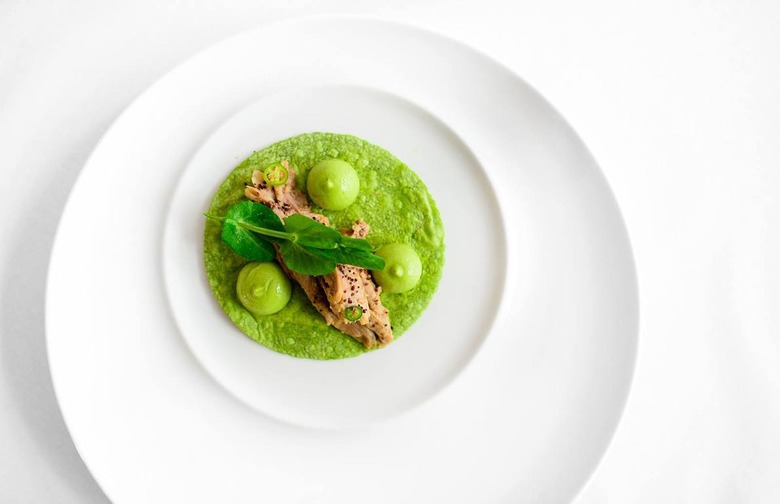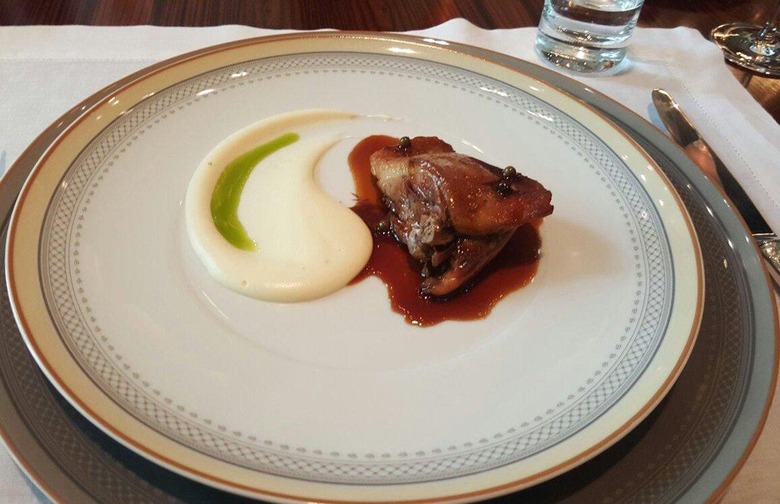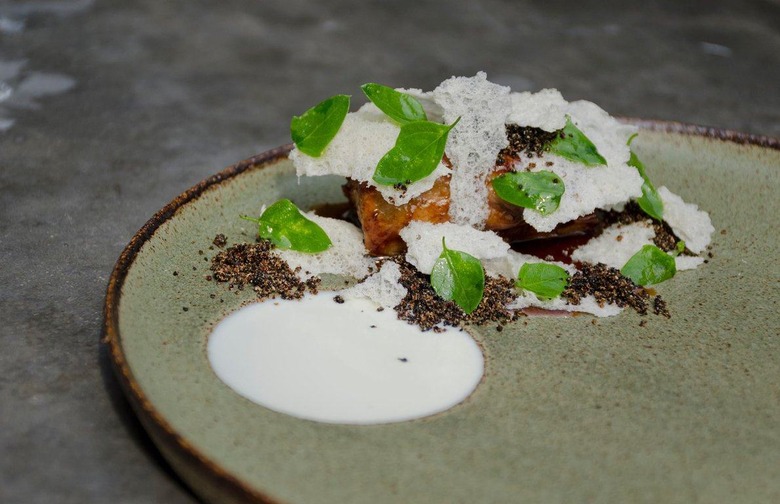Slideshow: 101 Best Restaurants In Latin America And The Caribbean Of 2017
This casual restaurant on Kaibo beach has both extraordinary food and stunning views. The unique rare rum collection, procured by owner Daniel Petts, numbers over 50 rums from 23 countries, with sample flight options, including an introductory tasting for those who want to learn more about the experience of sipping fine rum and a connoisseur's flight for those with more advanced palates. As you sip on, say, a 25-year-old El Dorado rum from Guyana, savor thinly sliced wahoo and scallop crudo marinated in fresh lime with Cayman seasoning peppers and sweet spiced pepper jelly — or enjoy the chef's six-course tasting menu, offering cannelloni, grouper, and beef, among other things.
#100 Rhodes at Calabash (St. George’s, Grenada)
The upscale restaurant at the Calabash Hotel combines elegant table settings, beautiful tropical surroundings, island insouciance, and flavorful international cuisine, from tomato consommé with goat cheese tortellini and duck crêpes with squash purée and pickled plum to lobster stir-fry with rice noodles and a combination plate of pork fillet, pork belly, and chorizo with sweet potato purée.
#99 Primuseum (Montevideo, Uruguay)
The Museo del Primus, housed in an 1870-vintage building in the Uruguayan capital, is an eccentric collection of more than 3,000 antiques and artifacts — everyday items ranging from bus tickets to beer bottles to old kitchen appliances (it's named in honor of the kerosene-fueled Primus stove). The bric-a-brac-filled museum restaurant serves fixed-price meals, sometimes accompanied by a tango show. The fare is straightforward — local cheeses and cured meats, salads, lots of beef from the grill — but the overall experience is an uncommon delight.
#98 The Wine Cellar (Willemstad, Curaçao)
Dutch master chef Nico Cornelisse has run this attractively old-style dining room for decades, serving an appropriately old-style "continental" menu that covers everything from shrimp cocktail and foie gras to grouper with mango sauce and rack of lamb (flown in from Holland) with rosemary sauce and mint jelly. Even if you don't order dessert — the crêpe Suzette is popular — be sure to try the imported Dutch chocolates with your coffee.
#97 40 Strand Eatery (Christiansted, St. Croix)
Though now one of the U.S. Virgin Islands, St. Croix was a Danish colony for almost two centuries, so it's not surprising to find a section headed "smørrebrød" on the menu here, offering the restaurant's version of the open-face "knife and fork" sandwiches characteristic of Denmark. These are hearty, multi-ingredient constructions based on duck confit, smoked salmon, shrimp, and a mixture of meats. The food in general at 40 Strand is more fun than gastronomical — there's a "mac & cheese shoppe" that invites diners to embellish that comfort-food classic with a choice of 17 toppings, from asparagus to lobster; Mama's Fish & Bake Sliders made with johnnycakes and fried flying fish; and Swordfight, a couple of sausages over braised cabbage with hash browns and horseradish-cider mustard — but the cooking is solid and the no-frills dining room is friendly.
#96 Da Conch Shack (Providenciales, Turks and Caicos)
Chef Mark Clayton is onto something at the shabby-chic, open-air, now-legendary Da Conch Shack. Patrons enjoy seafood and rum-laced cocktails under swaying palm trees just feet from the water, out of which the restaurant's conch comes daily. While the menu includes other options like jerk ribs, it's the namesake conch that keeps folks coming back year after year. No matter how you want it — as cracked conch dusted with flour and fried, as a conch salad (conch ceviche with tomatoes, green peppers, onions, and lime juice), in a curried conch chowder, or as conch fritters — be sure to combine it with Johnny Fries (drizzled with black bean and pepper gravy) or island staple rice and peas, and don't forget a pitcher of potent, red, fruity rum punch. Save room for the rum cake garnished with rum raisins. The best part (besides the rum punch and good vibes and music)? You can take a dip in the turquoise ocean or pluck conch shells just feet from Da Conch Shack.
#95 Sugar Mill (Apple Bay, Tortola)
There's much to enjoy at Sugar Mill (housed, of course, in a 374-year-old stone sugar mill) besides the ambiance of a former sugarcane plantation. The hotel restaurant's chef-proprietors, Jeff and Jinx Morgan, offer a daily changing dinner menu served by candlelight. Reserve a table on the gazebo-style terrace, which overlooks the nearby island of Jost Van Dyke. The dinner menu changes nightly, but previous dishes have included lobster bisque with basil croutons, conch in garlic lemon butter sauce, and pan-roasted duck breast served with soba noodles and Asian cole slaw.
#94 Le Kano (Trois-Îlets, Martinique)
This woody beachside restaurant does a top-notch job with Creole specialties, both traditional and a bit refined. Sample spider conch confit with sweet peppers, roussi de porc (pork braised with herbs and spices) with white rum, duck breast with honey and ginger, or sweet potato flan with coconut caramel. The outdoor bar serves snacks and offers an impressive selection of the artisanal rum for which Martinique is known — but also a serious cache of Champagne.
#93 Ostradamus (Florianopolis, Brazil)
If fans of Brazil's Ostradamus had to make a one-word recommendation about the restaurant, it would simply be "oysters." The eatery is world-renowned for its melt-in-your-mouth oysters — served in a multitude of different ways (such as raw; with oil, Parmesan cheese, and tomato; or gratinada) — as well as other seafood dishes like grilled shrimp and octopus. We'd recommend asking for a table with a view, but since the restaurant is located on a dock, the scenery is spectacular no matter where you sit.
#92 Scotchies (Montego Bay, Jamaica)
Though jerk may have been invented on the beach at Boston Bay — near Port Antonio on the island's northeastern coast — Scotchies, a roadside jerk emporium about 130 miles to the northwest in Montego Bay, is arguably the most celebrated jerk spot of all, the go-to jerk shack for that allspice-and-chile-marinated grilled chicken or pork (or sometimes fish) that has become Jamaica's most popular culinary export. Scotchies is as simple as it gets — some open-sided structures with palm-frond roofs, rough-hewn wooden tables and chairs, an open-front bar, and windows in the side of a building where customers order and pick up their food. That food consists of spiced chicken, pork, or fish cooked on open-air grills over allspice (or pimento, as it's called in Jamaica) wood, served with side dishes like rice and peas (meaning field peas), roast yams, roast breadfruit, and "festival" (sweet, fried-cornmeal dumplings). This is far from a fine dining experience, but nonetheless, the food is excellent — and the setting is pure Jamaica.
#91 The Fish Pot (Black Rock, Trinidad and Tobago)
It can be surprisingly hard to find a good selection of truly fresh fish in the Caribbean, but the super-casual Fish Pot specializes in just that. On a typical day, you're apt to find three or four choices — red snapper, mahi-mahi, grouper, pompano, barracuda, or even Caribbean lobster — all of them just a few hours out of the water. Fish is grilled or pan-fried and served with vegetables and rice, pasta, or baked potato. The Fish Pot is also, though, known for serving the best steaks in Tobago.
#90 The Gazebo at GoldenEye (Oracabessa, Jamaica)
GoldenEye was once the estate of Ian Fleming, creator of James Bond (GoldenEye was also the title of a 1995 Bond movie), but has now been expanded into a stylish hotel and resort with villas and beach huts arranged between a lagoon and the Caribbean Sea. The Gazebo is actually more of a treehouse — albeit an elegant one, with stunning sunset views. The dinner menu might include ravioli filled with callaloo greens and dressed with coconut sauce, spicy-sweet parrotfish, or a fiery version of the inevitable (in Jamaica, at least) jerk chicken.
#89 Masala Bay (Castries City, St. Lucia)
Like many Caribbean islands, St. Lucia has a small but longstanding Indian community — a fact deliciously expressed in the mostly Mughlai-style cuisine at this warm, colorful restaurant. You'll find familiar dishes here (mulligatawny, assorted pakoras) but also some less common regional fare, like a gingery Kerala fish curry, prawns cooked in Goan spices, Kashmiri lamb curry, and a host of tandoori specialties, including a very spicy murg hariyali mirch tikka marinated in cilantro and green chiles.
#88 Il Nuovo Perugino Enoteca (San Juan, Puerto Rico)
For Italian food and wine in Puerto Rico, this chic restaurant and wine bar, with its undulating ceiling, is the place. The menu offers both the expected and the more unusual: supplì di riso al telefono (risotto and mozzarella croquettes), caprese salad, fettuccine all'amatriciana, gratinéed tagliolini with prosciutto (a classic from the Cipriani restaurants), a veal scaloppine of the day, pork tenderloin in sweet-and-sour balsamic vinegar sauce, a simple grilled bone-in veal chop. It's all solid and convincingly Italian.
#87 Ambrosía (Santiago, Chile)
In a converted residence in a ritzy neighborhood, this popular establishment offers well-cooked fare spanning several culinary traditions — Italian (veal tongue vitello tonnato and homemade spaghetti with mushrooms and eggs), French (sweetbreads with mushroom purée, lamb medallion with puréed minted peas), even South American (ceviche with citrus sorbet, grilled skewered beef heart with chimichurri).
#86 Hallwright's Bar de Vino (La Paz, Bolivia)
The quality dining scene in La Paz is young, but increasingly animated by restaurants like this modest but lively wine bar. Their philosophy is simple: "We want to highlight Bolivian flavors in innovative presentations. Also we are proud to offer local ingredients, including the best artisanal cheeses, gourmet meats, and sauces." This extends to Bolivian craft beers and even wines, the produce of a small industry almost unknown outside the country. The brief menu offers platters of assorted cheeses and meats, crostini topped with things like sun-dried tomatoes with tapenade or llama (yes, llama) salami or pastrami with pesto and chutney. Tapas include empanadas, patatas bravas, and trout ceviche with sweet potato — uncomplicated fare but presented with precision.
#85 Blanchards (Meads Bay, Anguilla)
Blanchards is just the kind of place you want to eat when you're lazing around Anguilla — a breezy, open-sided dining room with ceiling fans, candlelit tables, and sand and sea just outside the door. Self-taught chef and co-owner Melinda Blanchard offers a varied menu that combines island and Mediterranean influences, from local crayfish with crispy plantains and avocado salsa to burrata with cherry tomato jam and a grilled herb baguette, and from Jamaican jerk shrimp with sweet potato mash and grilled cinnamon-rum bananas to pappardelle pasta with pulled short ribs and olives. If even this laid-back venue is too formal for you, the adjacent Beach Shack, with tables actually on the sand, offers a huge menu of salads, sandwiches, tacos, bowls, and more.
#84 Lobster Alive (Bridgetown, Barbados)
The name of this beachside place tells you what the specialty is: Caribbean lobster, fished by scuba divers in the nearby Grenadines and flown here still kicking. For starters, there are such things as lobster spring rolls, conch chowder, and Greek salad enhanced with cold-smoked marlin. For the main course, there's a steak or a simply cooked fish choice if you must — but those lobsters, parboiled and then finished on the grill with garlic butter, are good. There's also jazz five nights a week and a Sunday Swing Jazz Lunch.
#83 Camarões Restaurante (Natal, Brazil)
This handsome establishment, next to a Holiday Inn Express in this bustling beach city in northeastern Brazil, was the first of a mini-chain of places devoted in part to camarões — shrimp — prepared in a number of styles (Parisian, with white wine and mushrooms; "international," flamed with brandy and sauced with béchamel; crunchy, with a crust of quinoa and herbs, over Brie risotto; etc.). A good selection of fish and, as is usually the case in Brazil, a solid menu of beef dishes is also available, but the shrimp is sweet-fleshed and delicious and shouldn't be missed.
#82 Voilà Bistrot (Paraty, Brazil)
The restaurant at this charming inn, or pousada, in the historic colonial city of Paraty in Rio de Janeiro state, is filled with wine bottles and images of Paris — but looks out onto a bamboo forest. French-born chef Christophe Legond makes occasional reference to his surroundings (as with his hearts of palm mille-feuille with sea bass ceviche) but primarily stays Gallic, serving escargots à la provençale, sole belle meunière, sliced duck breast with raspberry sauce and gratin dauphinois, and even crêpe Suzette — though flamed with Brazil's cachaça instead of the traditional Grand Marnier.
#81 Habana 61 (Havana)
This modest contemporary-style paladar and coctelería offers well-crafted versions of both Cuban and international dishes, making imaginative use of such indigenous ingredients as guava (with cream cheese and Cuban mint sauce), malanga (a taro-like root, here turned into a creamy soup with grilled tomatoes or fritters with garlic honey), and coconut (in pudding form with curry sauce). The selection of fish isn't huge, but the fish is fresh and treated well.
#80 The Cliff (St. James, Barbados)
Chef Paul Owens' menu for the dining room of this luxurious resort property often has an Asian accent — there might be moo shu pancakes with Chinese roast pork, assorted sashimi, or Thai red curry mussels — but there's plenty of international-style Western fare as well. Sautéed scallops come with truffle mash and creamed leeks; snails are cosseted in a pastry case with julienned vegetables and chive cream sauce; the 12-ounce veal chop comes with mustard and tarragon sauce and gratin potatoes — and the Valrhona chocolate pudding with rum sauce and vanilla ice cream is well worth the 20-minute wait it requires.
#79 Chaud (Port of Spain, Trinidad and Tobago)
Chef Khalid Mohammed brings fine dining to Port of Spain with his restaurant Chaud. Situated just across the street from the expansive Queen's Park Savannah, Chaud is set inside an architecturally charming old house. The smart décor includes local artwork that diners can also purchase if they are so inclined. The menu represents Caribbean flavors with a subtle international influence, with a variety of tartares of yellowfin tuna, Chilean sea bass, and Atlantic salmon as well as innovative dishes like the guava barbeque shrimp with creamy grits.
#78 El Asador Patagónico (Puerto Natales, Chile)
Housed in a space that was the village pharmacy for 60 years, El Asador Patagónico has kept some of the space's old furniture, creating a nostalgic atmosphere to match its old-style menu. The restaurant is known for smoked salmon and large fresh salads made with vegetables from area gardens, lamb roasted over a fire pit and seasoned simply, and a delicious pisco sour. There is also a range of Italian wines to accompany your meal.
#77 Le Tamarin (Grande Saline, St. Barthélemy)
Diners at this popular St. Barts restaurant, an open-sided structure nestled in a thicket of palms and tamarind trees, can go casual or serious: the combined lunch and dinner menu offers everything from chicken Caesar salad and a cheeseburger (with "grosse frites maison") to cucumber gazpacho with curdled sheep's milk and whole roasted fish of the day (for two) with aniseed cherry tomatoes. All of it is good.
#76 Mr. Grouper’s (Providenciales, Turks and Caicos)
You can probably guess what the specialty is at this super-casual local favorite with its plastic chairs, ceiling fans, and tropical-turquoise walls. The eponymous fish comes in various forms — fried in a sandwich, in spring rolls, in fritters, pecan-crusted, curried, and more. Other choices include conch chowder, curry conch, and jerk shrimp kabobs — with rum cake and coconut tart for dessert. The cooking here is spot-on and the island flavor is intense.
#75 De Cuisine (South Hill, Anguilla)
A newcomer to Anguilla (it opened about two years ago), De Cuisine is the offspring of husband-and-wife team Josh Proctor and Denise Carr, who serve both Caribbean and European cuisine in an intimate setting. Start with the foie gras mousse before moving on to the locally caught fish of the day, or "loin and moussaka" (goat loin with layers of goat meat, eggplant, tomatoes, and potatoes). For dessert, try the chocolate cake with orange and coffee syrup or the goat cheese cake with passion fruit and pomegranate syrup. After sampling the food, you might want to eat here for every meal, but keep in mind: De Cuisine is currently only open for dinner.
#74 La Cave à Vins (Fort-de-France, Martinique)
The wine list, one of the best in the French Caribbean, is the big draw at this cozy, charming restaurant, but the substantial French-Caribbean fare is a worthy match for all those good bottles. Sea urchin cassolette, chicken breast stuffed with conch, duck breast "Rossini" with foie gras and morels, and mango pie are a few typical dishes.
#73 Al Frío y al Fuego (Iquitos, Peru)
When it opened in 2006, Al Frío y al Fuego ("from the cold and the fire") was the first international-caliber restaurant in Iquitos, a city in remote northeastern Peru. The floating restaurant and bar, anchored on the Itaya River, is Amazonian through and through, from the roof made of leaves to the menu of Amazonian cuisine. Classic dishes to try include ceviche mixto (octopus, crab, and shrimp) in "tiger's milk," a marinade involving lime juice, chiles, and fish juice; piqueo regional (thin slices of corned beef and chorizo with fried yuca, plantains, chiles, and Creole sauce); and lomo saltado (stir-fried beef with onions, tomatoes, pepper, cilantro, and sesame oil, served with French fries and white rice).
#72 On the Rocks (St. Jean Bay, St. Barthélemy)
This is St. Barts Jean-Georges Vongerichten style, an island-elegant dining room (sit on the wraparound deck if you can) at the island-elegant, beautifully situated Hotel Eden Rock. The food is gorgeously, confidently French, with few of the Asian accents this protean chef often incorporates into his cooking. This is food you could eat (and be happy eating) in Paris: artichoke velouté with seared foie gras and black truffle emulsion, candied pork belly with Provençal herbs and Basque-style vegetables; praline millefeuille with Tahitian vanilla cream and hazelnut ice cream... Vive les French West Indies!
#71 Ox (Santiago, Chile)
Brazil and Argentina get most of the attention when it comes to steakhouses in the region, but Chile's Ox restaurant has often been considered to have some of the best steak in all of South America. Whether you order the short ribs, striploin, bone-in ribeye, flat iron, skirt, tenderloin, prime rib, porterhouse, or filet, Ox will provide a delightful experience — especially if you manage to snag one of the restaurant's patio tables (and a glass of wine or a pisco sour). The risotto is also highly recommended. Even after the meal, Ox still aims to delight; servers bring a giant plate of cotton candy for guests to share before they depart.
#70 Esplanada Grill (Rio de Janeiro)
It's all about the meat at this clubby-looking classic, popular with Brazilian celebrities, a few blocks from the famous beach at Ipanema. Some 30-plus choices of meat and (in the minority) fish are available here, all of it skillfully grilled with little more than a dusting of salt. There are plenty of other things to eat here — the Brazilian manioc-flour cheese puffs called pão de queijo, salt cod fritters, skewered chicken hearts, abundant salads, duck confit, the epic feijoada — but the meat is what you want: ojo de beef (ribeye), picanha (rump cap), Red Angus T-bone, rack of lamb, even ostrich if you're in that kind of mood.
#69 Bonito St. Barth (Gustavia, St. Barthélemy)
A converted Caribbean hillside villa overlooking Gustavia Bay, this breeze-cooled, high-ceilinged restaurant proposes a menu that combines French and Peruvian flavors with a Gallic refinement. Ceviches and tiraditos are featured; there are sea scallops smoked à la minute with lime emulsion, nashi pear, and Avruga caviar, and spiny lobster risotto with yellow chile cream, edamame, and asparagus; beef tenderloin is served as both Peruvian lomo saltado and Rossini style (with foie gras and truffle oil sauce); desserts include tres leches cake with dulce de leche ice cream to a classic Paris-Brest.
#68 La Querencia (Tijuana, Mexico)
Miguel Ángel Guerrero Yaguës, the chef-proprietor of this Tijuana original, may have coined the term "Baja Med" — and he was certainly one of the earliest practitioners of this tantalizing hybrid cuisine. La Querencia has a hip, contemporary-industrial look: bare concrete floors, lacquered steel tables, and exposed ducts overhead. Subtle, low-tech touches abound, like mounted game trophies on the walls, a tropical fish tank at one end of the dining room, and a row of rusty cooking implements hanging above the divider that separates the open, stainless-steel kitchen from the dining room. The focus here is on fresh Baja seafood — scallop carpaccio, grilled shrimp salad, salmon tarta, a mixed seafood plate with red and white miso sauces and hot chiles. Also available are dishes like fresh pasta with several sauces to choose from, lamb chop in pesto sauce, and a range of tacos, tostadas, and burritos employing such uncommon fillings as smoked marlin, giant squid, manta ray, tuna fin stew, and abalone "chorizo" — all of it delicious.
#67 Boucan Restaurant & Bar (Soufrière, St. Lucia)
According to the folks at Boucan — the restaurant at the Hotel Chocolate on St. Lucia's Rabot chocolate estate — cacao, the heart of chocolate, has been eaten in savory foods for 3,000 years and sweet ones for only 300. Cacao pulp and nibs, then, are incorporated into the idiosyncratic but appealing menu here. It's doubtful that any other restaurant, anywhere, will offer you Yorkshire pudding filled with rare seared cacao-spiced beef with white chocolate mash and cacao red wine gravy, or chickpea-peanut hummus with chile-cacao-nib oil and roasted walnuts — not to mention Creole fish with cacao spices and butternut squash purée, or fish and chips in local beer and cacao tempura batter with sweet potato fries and mushy peas. Oh, and you can imagine what the desserts are full of.
#66 The Cliff at Cap Maison (Gros Islet, St. Lucia)
Executive chef Craig Jones runs this nouveau French West Indian restaurant — one of the most sought-after tables on the island of St. Lucia — located in the Cap Maison Resort. The ever-changing menu features fresh local produce and unobstructed views of exactly where the seafood comes from: the beautiful Caribbean. The Cliff at Cap's signature dishes include butter-poached snow crab claws in a squid ink risotto with crispy leeks; braised Kobe short rib with caramelized plantains and soya beans; and ceviche of reef conch, ahi tuna, and mango balsamic.
#65 Flora’s Field Kitchen (San José del Cabo, Mexico)
Its location down a rutted dirt road may make some tourists wary, but don't let the adventure of getting there deter you. Flora's Field Kitchen, located on Flora Farm, a 10-acre organic farm-plus-market in the foothills of the Sierra de la Laguna Mountains, offers an unforgettable farm-to-table dining experience in a beautiful setting. All ingredients used come from the farm, owned by Gloria and Patrick Greene; breads are made in a wood oven, and the free-range meat comes from their nearby 150-acre ranch. Chef Aaron Abramson, a veteran of Blue Hill at Stone Barns, offers diners everything from a sandwich of homemade sausage with pickled vegetables (at lunch), to burrata with tapenade, to 12-inch pizzas from the wood oven. Diners rave about the fresh juices and the specialty cocktails, like the hibiscus martini or the pelo de perro ("hair of the dog"), Flora Farm's twist on the Bloody Mary. Sometimes, farm walks are offered pre-meal, and often there is live music into the early evening. A suggestion to keep in your back pocket: Diners suggest taking a cooler along so you can buy some fresh produce and artisanal goods to bring back to your hotel with you.
#64 Dune (Nassau, Bahamas)
Jean-Georges Vongerichten has restaurants in both the Bahamas and St. Barts (see no. 81) and manages to deftly adapt his refined cuisine to both locales. In this airy, elegant-rustic dining room at the One&Only resort in the Bahamian capital, the chef makes skillful use of local seafood and produce, displays his prowess with Asian flavors, and adds an occasional Bahamian lilt (as with his conch salad with cucumber, tomato, and lime). The Black Plate for two is a great way to get started: crab spring roll with tamarind sauce, chicken samosa, shrimp satay, lobster daikon, and tuna and avocado in rice paper with nam prik sauce are the perfect lead-in to the local lobster with light curry sauce and fried plaintains or fragrant spiced lamb chops with cucumber yogurt.
#63 Le Bistro (St. John, Antigua)
Antigua's premier French restaurant looks more tropical-ornate than Parisian, but the food combines classics that would be at home in France with hints of local flavor in a skillful and appealing way. The onion soup is classic, but the vichyssoise is made with curried apples and garnished with mango chutney. The traditional Maria Rose sauce that dresses the lobster cocktail is enhanced with black pineapple. Local lobster is served simply grilled, with butter, but the king prawns are tossed in curry sauce and garnished with fried plantains. Chicken, duck, veal, pork, and beef fill out the menu, and crêpes Suzette — of course — are available for dessert.
#62 San Cristobal Paladar (Havana)
Carlos Cristóbal Márquez Valdés' homey paladar is actually the ground floor of a turn-of-the-last-century mansion, jam-packed with artifacts, photographs, posters, old clocks, and more. The food isn't fancy — seafood salad, cream of pumpkin soup with garlic and herbs, fish filets with orange sauce ("Florida style"), pork loin tips with mustard sauce, ice cream with caramel cream — but it's honest and hearty and served in friendly surroundings.
#61 99 (Santiago, Chile)
The résumé of Kurt Schmidt, the owner-chef of this warmly furnished restaurant, with its recycled furniture and multicolored overhead lights, includes stints at Azurmendi and Aponiente in Spain and Noma in Copenhagen, and his tasting menus betray a sense of adventure. No other Chilean restaurant is apt to offer smoked venison tartare with wood sorrel and trifoliate garlic, assorted mushrooms dusted with mushroom powder, confit lamb's tongue over cauliflower purée with plums and caramel, or carrot sorbet with coconut foam and caramelized peanuts.
#60 The Point (Hamilton, Bermuda)
In 1965, Juan Trippe, who founded Pan American World Airways, commissioned artist Gerard D'Alton Henderson to create an 80-foot-long mural, depicting nineteenth-century clipper ships (Trippe styled his airplanes "clippers") in exotic ports around the world, for the Sky Club of the Pan Am Building in midtown Manhattan. The mural was installed in 1966. Pan Am ceased operations in 1991, but the Sky Club remained open until 2005. Upon its demise, the mural was auctioned off — and eventually purchased by Ed Trippe, Juan's son, who had opened what is now the Rosewood Tucker's Point resort on a hillside in Bermuda. Trippe installed it in the hotel dining room, The Point, and it is spectacular enough to make a visit here worthwhile just for visual reasons alone. Happily, the food is impressive, too. Taking the mural's international theme to heart, chef Gerry Adams offers everything from a first-rate rendition of Bermuda's traditional fish chowder (with rum and sherry peppers) to oysters from Scotland and wild striped bass (served with razor clams, smoked mashed potatoes, and a fennel orange salad with caramelized shallots).
#59 The Brasserie (George Town, Cayman Islands)
"Sea-to-fork" cooking is the specialty at this bustling restaurant with its organic garden and exhibition kitchen, but "field-to-fork" gets a nod, too. Try the twice-cooked local eggplant with tahini and grilled pita, Cayman crab and mango salad, peri-peri chicken with saffron tomato rice and charred okra, and homemade ice creams in such flavors as local soursop, salted caramel mango, and dark chocolate with Cayman sea salt.
#58 Le Chique (Riviera Maya, Mexico)
Don't let the bare floors, bare tables, and beach-town locale (it's part of the Azul Sensatori resort) fool you: This acclaimed restaurant serves very sophisticated modernist cooking drawn from Mexican tradition and using local ingredients but informed by the culinary styles of places like Noma, elBulli, and El Celler de Can Roca — in all of whose kitchens head chef Jonatán Gómez Luna Torres has worked. Expect unusual presentations, uncommon textures, and trompe l'oeil constructions — like a perfect lemon that's actually a candy shell filled with lemon curd. Menus are written in the elliptical style so à la mode these days: cherry + Campari, corn + mole prieto, aguachile + prawns + dragonfruit, smoked plantain + chocolate. Come without preconceptions and leave amazed
#57 Casa Oaxaca (Oaxaca, Mexico)
A consistent favorite in this vibrant regional capital with a charming courtyard and an atrium dining room, Casa Oaxaca serves an ample menu of local specialties, including maguey worm tostadas with chicatana ant mayonnaise; tlayudas (the so-called "Mexican pizzas") with chorizo or thin-sliced beef; and a whole repertoire of moles, the specialty of Oaxaca, including some made with rabbit and beef tongue. There's a good list of bottles from the major Mexican wine regions, and of course an arsenal of mezcals.
#56 La Perla (Cartagena, Colombia)
Peruvian chefs are famous for their skills not only in their home country but throughout South America, so it's hardly surprising that Peru's Carlos Acinelli is the man behind the food at one of the best restaurants in this attractive port city. The long, narrow, wood-framed dining room is always full of locals enjoying various tiraditos (fresh fish marinated in "tiger's milk," a chile-fish sauce mixture), grilled baby octopus with chile-laced chimichurri, shrimp with Argentinean sausage and yucca purée, and a famous sirloin steak with Roquefort sauce on a bed of mushroom risotto.
#55 Restaurante Garzón (Garzón, Uruguay)
The well-to-do in Buenos Aires often own vacation houses or patronize vacation getaways on the far side of the Río de la Plata, in Uruguay. Thus it's not surprising that Argentinean super-chef Francis Mallmann set up shop in that country some years ago, with a boutique hotel, restaurant, and farm and vineyard in the small community of Garzón, northeast of the beach resort of Punta del Este. Here, using herbs and vegetables grown on the property and mostly cooking with live fire (his speciality), Mallmann offers such informal delights as mint and zucchini salad with toasted almonds and Parmigiano, rack of lamb with walnut gremolata and green leaves, and burnt fruits with Disaronno and mascarpone
#54 Ocio (Medellín, Colombia)
Dark wood, recycled industrial materials, and hanging lanterns set the scene for French-trained chef Laura Londoño's intensely flavorful, internationally accented specialties — salmon tataki with anchovy mayonnaise and crispy chickpeas, pork belly and grapefruit salad with pickled carrots, local fish with chorizo crumble and white bean purée, macadamia ice cream sandwich with salted caramel, and the like.
#53 Restaurant 1643 (Le Carbet, Martinique)
Color and calm characterize this Martinique classic, in one of the oldest houses on the island. The walls and trim are bright yellow, red, and green; the garden is abundant with flowers; the covered terrace is cooled by evening breezes. The food? Sophisticated French with a Creole accent — open ravioli with local shrimp and scallops, unctuous steak tartare, lionfish bouillabaisse-style, supreme of guinea fowl with morels, deconstructed lemon tart... In all, a gem of a restaurant.
#52 La Palapa by Eden Roc (Punta Cana, Dominican Republic)
Often cited as the best restaurant in Punta Cana, La Palapa by Eden Roc has a little something for everyone on the menu. From pastas like gnocchi and linguini to sushi and fusion cuisine, it's hard to decide what's better: the food or the spectacular views. The food, on one hand, currently includes seafood like grilled octopus with romesco sauce and red tuna tartare on a bed of avocado and mango, as well as Black Angus tenderloin and skirt steak. And as for the view, the restaurant is located in the Eden Roc Beach Club, and the scenery can even be seen on the website via a 360-degree view that would make anyone look into immediately buying a plane ticket to the Dominican Republic — as if we needed another reason.
#51 Local by Rausch (Bogotá, Colombia)
Brothers Jorge and Mark Rausch are famous in Colombia for their highly professional, accessible, mostly seafood-centric restaurants in Bogotá, Cartagena, Medellín, and Barranquilla (they also have an outpost in Costa Rica). Local breaks new ground, applying a contemporary sensibility to traditional Colombian dishes and indigenous ingredients (the country is the second-most biodiverse in the world, after Brazil). That means things like empanadas with a filling based on the traditional chicken and potato soup called ajiaco; smoked Andean trout with potatoes, cream of guasca (a local plant also called potato weed), fresh and toasted favas, and the Andean tubers called cubios and chuguas; and warm malted chocolate cake with tamarind gelée, Colombian beer ice cream, coffee cream, and rice pudding.
#50 Maito (Panamá, Panama)
Mario Castrellón, the owner-chef of this warmly furnished restaurant hung with the work of local artists, creates "nueva cocina panameña," meaning imaginative dishes using lots of local products — including the bounty of the rainforests — and drawing on Panamanian culinary traditions expressed with accents from Asia, the Caribbean, and beyond. A meal here might begin with small tacos of cured lamb with tzatziki or beet carpaccio with local cheese and continue with crayfish in a sauce of purslane and bok choi or filet with coffee sauce, palm fruit, onions, and potatoes before ending with Castrellón's take on the classic tres leches cake.
#49 Oviedo (Buenos Aires)
This cosmopolitan Spanish seafood restaurant, with its bustling brasserie atmosphere, serves some of the finest, freshest fish and shellfish in this meat-loving city. Grilled squid with burnt eggplant purée, mushroom-filled tortelloni with seafood and pumpkin, trout with carrot and thyme, and a large selection of grilled fresh fish with various sauces are typical of the fare here. Apple "panqueques" and quince paste with Argentinean cheese anchor the dessert menu. Oh, and for the unreconstructed carnivore, there is of course meat, too — ranging from simple roast Patagonian lamb to wild boar with mushrooms and eggs scrambled with manioc and pancetta.
#48 Dulce Patria (Mexico City)
Presentation is important at Martha Ortiz's popular, idiosyncratic, colorful restaurant, whose look is said to have been inspired by the works of famed artist Frida Kahlo (Ortiz's mother, Martha Chapa, is a famous artist too): The food comes presented in small birdcages, on wooden airplanes, on a miniature carousel, and sometimes just in or on unusual custom-made plates or bowls. And what food it is! From her mole bread (and acclaimed pink mole) to her multi-hued empanada-like quesadillas, foie gras and black bean soup, and crispy salmon with corn sauce, this is inspired, highly original cooking. And be sure to order a tequila shot, served with side shots of sangrita, beet juice, and tomatillo juice — a whole new way of drinking.
#47 Mocotó (São Paulo)
About a 40-minute drive from the center of São Paulo in the district of Vila Madeiros is an eatery that is genuinely worth waiting line for — which you'll almost certainly have to do, though with a caipirinha in hand. (Mocotó is famous for fashioning its caipirinhas from artisanal cachaças.) Mocotó first opened in 1974 as a small neighborhood eatery and steadily grew to become one of the best restaurants in Brazil. Run by the impressive Rodrigo Oliveira and his father, restaurant founder José, Mocotó offers diners a taste of the cooking of Pernambuco, the northeastern Brazilian state whence the Oliveira family originates. In fact, the restaurant's name is also that of a popular calf's foot soup from that region. You'll find nothing but traditional dishes here, all of which Rodrigo Oliveira executes with the utmost precision. Must-order items include the signature caldo de mocotó, made from an old family recipe; baião de dois, Brazilian "rice and beans," made with curdled cheese, sausage, bacon, and jerked beef; and homemade salt-cured beef served with clarified butter, roasted garlic, sweet peppers, and cassava chips. For dessert, you'll find ice creams and compotes made with tropical fruits as well as in-house creations such as chocolate mousse with cachaça.
#46 Osaka (Santiago, Chile)
Located in the luxurious W Hotel, Osaka (sister to the Lima restaurant of the same name) mixes elements of Peruvian, Thai, Chinese, and Japanese cuisine into works of art on plates, which mesh well with the eclectic art adorning the walls. With dishes like ceviche al wasabi, salmon medallions over a bed of spinach with mushroom sauce, and seafood marinated in sake and yellow ají chile sauce, Ciro Watanabe takes fusion cuisine to the next level. Feeling a bit less adventurous? Pull up a seat at the sushi bar (with a Peruvian cocktail from the regular bar) and prepare to be dazzled.
#45 PuraTierra (Buenos Aires)
Martín Molteni is one of the most acclaimed young chefs in Argentina, and one of the most contemporary-minded. Fanatical about the quality of his raw materials, he fashions bright, fresh dishes that are beautiful to behold and satisfying to the palate. His ceviche combines squid and whitefish in a marinade of "tiger's milk" (a chile and fish sauce condiment), sweet potato, and yellow chiles; he offers a tartare of rhea (an ostrich relative) with sweet pepper gelée and herbs; in his hands, Argentine-style pork shoulder is served with potato terrine, braised pears, and carrot emulsion; for dessert, one of his inspirations is pumpkin confit with Brie, sweet-potato cream, and gingerbread. It's all very original, and very savory.
#44 Galangal (Christiansted, St. Croix)
Since both the French and various Asian populations have had such a strong cultural influence on the islands of the Caribbean over the centuries, it's hardly surprising to find a first-rate French/pan-Asian establishment on St. Croix. There's always fresh fish (try the locally caught wahoo if it's available), and the Thai-style curries are superb (the red curry with vegetables and tofu gets high marks), but expect to find specialties like rabbit terrine with apricot preserves, mushroom-and-herb-crusted lamb loin, and flourless Belgian chocolate cake with mango ice cream, too.
#43 Marmalade Restaurant & Wine Bar (San Juan, Puerto Rico)
This sleek, chic restaurant is the preserve of American-born chef Peter Schintler, an alumnus of Gordon Ramsay and Raymond Blanc, who cooks with skill and wit. The dish called R3 is an assemblage of local organic radishes, Roquefort cheese, and red apple — the three Rs — with honey, lemon, and peppery sprouts. The popcorn shrimp isn't just a heap of fried crustaceans: it's shrimp marinated with garlic and cilantro and lacquered with añejo tequila, then served with guacamole and ancho-chile-spiced popcorn. Red curry pot pie is filled with smoked eggplant, peppers, zucchini, and squash. Pacific halibut cheeks are "swimming" in corn and jalapeño broth, with black bean and tomato relish and toasted cornbread crumble on the side.
#42 Le Mabouya (Sainte-Luce, Martinique)
Often called the best restaurant in Martinique — and there's a lot of competition — this relaxed and comfortable dining room, with Caribbean views and cooling cross-breezes, offers an enticing menu of French specialties using local ingredients and flavors. Typical dishes include spider conch lasagna, goat cheese spring rolls with roasted Camembert and salad, brochette of scallops and shrimp with sesame and passion fruit vinegar, and Alsatian-style filet mignon of pork.
#41 Baoase Culinary Beach Restaurant (Willemstad, Curaçao)
The signature restaurant at Curaçao's extravagant Baoase resort, this highly professional establishment, overlooking a private lagoon, turns luxury ingredients into savory, vividly flavored dishes with considerable refinement. Foie gras combines with top-of-the-line pata negra ham from Spain, pears, Pedro Ximénez sherry, and balsamic cream; Surinamese prawns and tuna are combined with cucumber, wasabi, herbs, and cream of curry; locally caught lionfish becomes ceviche with avocado, mango, bell pepper, and citrus; and imported North Sea turbot is garnished with truffles and a potato-pancetta terrine.
#40 Nicos (Mexico City)
Mexico City is becoming one of the world's great food cities, full of must-visit, handsomely designed establishments from Enrique Olvera's spectacular Pujol on down, but one of the best places of all is this modest storefront in an out-of-the-way neighborhood, founded in the 1940s by the mother of the current chef-proprietor, Gerardo Vazquez Lugo. The stylistic (and culinary) equivalent of that perfect little bistro you always hope to find in some far-flung arrondissement of Paris, Nicos serves perfectly realized versions of a wide range of traditional dishes — impeccable tableside guacamole and Caesar salad, enchiladas in green sauce, smoked duck salpicón, organic pork in Guadalajara-style adobo with dried chiles and chocolate, flan with cajeta (caramelized goat's milk).
#39 Paladar Los Mercaderes (Havana)
Meander your way down one of Havana's oldest streets, to find the modest, family-run Paladar Los Mercaderes. Though it's located in Old Havana, it's comparatively new to the city's dining scene, and you'll find this 50-seat restaurant teeming with locals, especially at lunchtime. Walk up a flight of stairs to the generous first-floor dining room, where you will be greeted by live music and an incredible menu of Cuban and international dishes. Among these are ceviche, French onion soup, smoked pork with onion eggplant lasagna, ropa vieja (the Cuban classic beef stew), lobster with pineapple sauce, and fresh fish with salsa verde.
#38 Dalva e Dito (São Paulo)
Chef Alex Atala of São Paulo's D.O.M. prepares simpler, more traditional food at this casual offshoot of his flagship, but the quality is first-class. From the light but savory palitos de mandioca ("cassava sticks," essentially yuca fries) to the dense pudim de leite (flan), everything is prepared with great skill and consistency. Other homey fare includes such dishes as roast duck in manioc sauce and crispy octopus. The array of caipirinhas offered is dangerously delicious.
#37 Bolero Brasserie (Hamilton, Bermuda)
Chef Johnny Roberts opened Bolero Brasserie in 2007 with the hopes of it becoming a neighborhood eatery that would evoke a warmth and charm that invites all guests — from business-suit-clad clientele to the more casually dressed — to dine at his brasserie. Since then, it has become one of the top spots in Hamilton, earning itself an esteemed reputation among locals and visitors alike. The menu at the brasserie changes weekly, but the vision behind it remains consistent: brasserie fare with a twist from Roberts' own culinary training. On the menu, guests will find starters like snail and garlic beignets with roast garlic hummus, and mains including lamb chops with grilled zucchini and charred tomato jam or mahi-mahi with lump crab, avocado, and wasabi. And while most local restaurants seem to play it safe with fish chowder and grilled fish, here you'll find dishes involving duck confit, pig's feet, pork cheek, and lamb's liver.
#36 The Kitchen Table by White (Palm - Eagle Beach, Aruba)
Sixteen (comfortable) seats at a curving counter wrapped around the kitchen, seven to eight courses of Aruban or other Caribbean specialties interpreted with finesse, and a paradisiacal setting at Aruba's Blue Residence luxury condo complex — not a bad combination. Chef Irvin Croes changes his menu constantly, and it is often themed. Spring rolls filled with a local-style chicken and cashew stew, rich oyster soup, pan-fried fish cakes, curried lamb shank served with a seared lamb medallion, and pumpkin custard with pumpkin cream are previously served samples of the fare.
#35 Tegui (Buenos Aires)
With its funky, graffiti-covered exterior and smart, handsomely set dining room complete with lively open kitchen, Tegui is a must for any food-conscious visitor to the Argentine capital. Owner-chef Germán Martitegui, a protégé of live-fire master Francis Mallmann, has an original take on the blending of flavors, especially of salty and sweet. The menu is small and changes often, but sometimes he embellishes oysters not only with trout roe but also slivers of green apple; there might be shrimp ravioli in scallop foam, scattered with bits of mango; quail might be stuffed with leeks and pears. The presentations are elegant, and the contrasts of flavor work well.
#34 Jade Cuisine at Jade Mountain (Soufrière, St. Lucia)
With direction from consulting chef Allen Susser, executive chef Jonathan Dearden serves a contemporary menu that marries the flavors of the Caribbean, Mediterranean, Pacific Rim, and Latin America. Dearden and his team source ingredients like cocoa, turmeric, cashews, almonds, and avocados from Jade Mountain's own tropical plantation, Anse Mamin, and lettuce, tropical vegetables, herbs, vanilla beans, bay leaf, nutmeg, cinnamon, mangos, sour oranges, limes, and plantains from Emerald Estate, a rain forest farm on the island. These ingredients are combined with local seafood, such as yellowtail snapper, grouper, cobia, wahoo, stone crab, conch, shrimp, and lobster to create a diverse menu. Past non-local dishes include a "caviar kiss" of smoked salmon cream and farm-raised caviar; dry-aged filet mignon with purple potato cake and grilled pumpkin; and "Chocolate vs. Vanilla," a dessert of flourless chocolate cake, vanilla custard cake, and white chocolate cashew ice cream.
#33 Pangea (Monterrey)
Guillermo González Beristáin opened Pangea in 1998, and since then has set the standard for Mexican haute cuisine, influencing chefs and other restaurants to follow in his footsteps of presenting local Mexican produce in new, inventive ways. Beristáin has opened several other restaurants in northeastern Mexico, but Pangea remains his flagship, serving diners Mexican cuisine prepared with modern French techniques. Notable dishes include foie gras with stewed prunes and armagnac, served with black olive bread; steak tartare; angel hair pasta served with shrimp, grilled vegetables, and chiles; and angus beef tenderloin with foie gras and white truffle oil served in a port reduction. Pangea is also home to a highly regarded wine cellar, as Beristáin is a strong supporter of Mexican wines.
#32 Havana Blue (St. Thomas)
On an island full of pedestrian tourist offerings, Havana Blue is a standout for its Cuban cuisine with pan-Asian influences. Perched on a cliff overlooking Morningstar Bay, the airy, gazebo-style restaurant is awash in icy blue lighting accented with Caribbean touches like whitewashed wood, swirling ceiling fans, billowy white curtains, and candles galore. There's much to offer, from added twists on classic Caribbean cocktails like the Mango Pain Killa (Parrot Bay Mango Rum, a blend of coconut, orange, and pineapple juices, and grated nutmeg) to the Pink Guava Punch (Bacardi Silver Rum, pink guava, muddled cilantro, house juice blend, and a float of Gosling's rum over ice). Appetizers, mains, and desserts are expertly prepared and thoughtfully presented using the latest contemporary techniques. Try the mahi maho mahi (pan-seared yucca-encrusted mahi mahi with citrus jicama slaw, Malaysian red curry risotto, and coconut-Key lime sensación) and mojito skirt steak (mojito-glazed tender skirt steak with cilantro-chorizo mash and crispy tobacco onions served with mojito and cocojito dipping sauces). Save room for the Diablo Chocó Fondanté (rich dark chocolate cake with molten dulce de leche center, fresh berries, and coconut/almond/dark chocolate chip ice cream) and the strawberry tres leches shortcake (angel food cake with dulce de leche, fresh strawberries, and yuzu crema).
#31 Deckman's at El Mogor (Valle de Guadalupe, Mexico)
Georgia-born chef Drew Deckman, who won a Michelin star at Restaurant Vitus in the northern German town of Reinstorf, was executive chef at the Raffles L'Ermitage Hotel in Beverly Hills, and may or may not have cooked privately for Tom Cruise, became famous in Baja California for his San José restaurant in Los Cabos. For several years, he'd leave the place in summertime and migrate north to Baja's Valle de Guadalupe, Mexico's premium wine country, to cook at an informal outdoor restaurant there at the Mogor Badán winery. Now he has moved permanently north, taking up fulltime residence at Mogor Badán, which is also an organic farm — a fact Deckman takes full advantage of. Even the olive oil comes from the property (and seafood from the nearby Baja coast). Dinner is served at picnic tables outside with a view of the vines, or under a tin roof, and the cooking is all done with live fire (no gas or electric ranges). Expect Baja Kumiai oysters, grilled local fish, grilled octopus, grilled quail, roast pork, and other straightforward but perfectly prepared specialties that enhance, and are enhanced by, the local vintages.
#30 MeroToro (Mexico City)
"Mero" is grouper; "toro" is bull. Put them together and you have a splendid "surf-and-turf"-themed restaurant opened in 2010 by Gabriela Cámara and Pablo Bueno of the popular Contramar. The place may be located in Mexico City's posh Colonia Condesa, but the vibe is relaxed (bare tables and slat-backed chairs, open kitchen), and the inspiration comes from far to the northwest, from Baja California, and Cámara and Bueno have secured the services here of one of that region's most accomplished chefs, Jair Téllez of Laja in the Valle de Guadalupe, Baja wine country. Téllez pleasantly surprises palates in the Mexican capital with fresh ceviches, risotto with bone marrow and red wine, birria (a spicy stew usually made with mutton or goat) of clams, and a delicately cooked grouper (of course) on a bed of puréed cauliflower. Tellez's signature dish, though, shows that he has both feet on the ground: pan-fried pork jowl with lentils and a poached egg. Plus, the excellent sourdough bread is unique in Mexico.
#29 Harry Sasson (Bogotá)
After training both in Colombia and in Canada, eponymous chef Sasson returned to Bogotá, where he now runs a small empire of restaurants and bakeries, of which this restaurant is the crowning glory. Situated in a beautifully-renovated 1934 mansion, the dining room is open and airy with a soaring peaked ceiling and a latticework of white steel beams over glass. Sasson's food might best be described as "global," with Asian and Latin American flavors mixing deftly. Expect everything from crab chowder with leeks and potatoes or smoked tomato and pine nut fondue, to lobster tail, beef ribs cooked Japanese-style on hot volcanic stone, and linguine with clams. There are also pides, Turkish flatbreads with various toppings. Somehow, Sasson brings it all together exceptionally well.
#28 Patagonia Sur (Buenos Aires)
This 1920s-vintage Italian-style townhouse in the bohemian Buenos Aires neighborhood of La Boca was home to Francis Mallmann, Argentina's most famous chef, before he turned it into a small, warm, appropriately homey restaurant. The cooking here is not as dramatic as that at Mallmann's Mendoza wine country restaurant, Francis Mallmann 1884 (see #22), but it's spot-on — unpretentious, savory, local in flavor. The menu changes from time to time but will usually include plump homemade empanadas, choripan (chorizo in a bread-dough wrapping), and meat.
#27 Osaka (Lima)
Since opening its doors in 2002 in central Lima, Osaka has expanded to five more locations: another one in Lima, two in Buenos Aires, one in São Paulo, and one in Santiago. We prefer the original, but apart from slight variations in the décor and menu at each location, the basic theme at each remains the same: modern Nikkei cuisine, the century-old fusion of Japanese and Peruvian food which began in Lima. The restaurant features a massive sushi bar in one corner and two tatami rooms. Tuck into ceviches, tiraditos (carpaccio-like raw fish with spicy sauce), and sushi rolls, and fall in love with Osaka.
#26 Finca Altozano (Valle de Guadalupe, Mexico)
Javier Plascencia is the restaurant king of Tijuana, the once-sordid border town that has become an important dining destination for food-lovers in Baja and Alta California alike (see Misión 1919, no. 8) — but this sprawling, open-sided restaurant on a dirt road in the middle of Baja wine country is in a class of its own. Here, Mexican and Mediterranean products and preparations mix comfortably — the region produces excellent olive oil as well as wine, and of course all the Mediterranean vegetables grow well here. The mountain ham with tomato bread is as good as what you'd get in Spain, and the fresh local vegetable risotto would do an Italian proud. There's a selection of Baja oysters, too. But then Plascencia offers miniature tostadas of octopus ceviche, tacos filled with everything from refried beans to beef tongue, roasted local baby lamb with just-made tortillas on the side, and duck confit in black mole with charred dates. Talk about the best of two worlds.
#25 Boragó (Santiago, Chile)
The food at this glass-enclosed contemporary-Chilean restaurant is close to nature in more ways than one: It looks outdoorsy, to begin with, with both the food itself and its serving accoutrements mimicking stones, dirt, and branches; and chef-owner Rodolfo Guzmán plucks many of the ingredients from the fields and hills around Santiago and the nearby beaches. He has been called "perhaps the pre-eminent forager in Chile." The dishes Guzmán creates have been described as "other-worldly." The menu changes constantly, but things like sea urchin, wild boar tongue, venison heart, nasturtiums, rock chard, tree mushrooms, and sea beans might figure in the chef's artful constructions. Chilean wines rarely seen outside the country are a plus.
#24 Moxi (San Miguel de Allende, Mexico)
Condé Nast Traveler anointed San Miguel de Allende, a pleasant and colorful artists' and American retirees' community in the state of Guanajuato (northwest of Mexico City), as the top city in the world several years ago — leaving such burgs as Barcelona, Paris, and Sydney in the dust. San Miguel is certainly an engaging and eye-catching place, and one of its great attractions — and a rare example of contemporary architecture in the city — is the Hotel Matilda, a comfortable and alluring hostelry graced by an excellent restaurant, Moxi. Moxi is under the direction of Enrique Olvera, of Mexico City's unparalleled Pujol, and the hot Manhattan entry Cosme. Here, in a pleasant, art-enhanced dining room with a breezy terrace, Olvera's crew draws heavily on organically-raised local produce to create Mexican-accented international cuisine: shrimp burgers with tartar sauce and guacamole; eggplant mole with artichokes and cherry tomatoes; wild mushroom risotto with guajillo chile and red onion; confit suckling pig with radishes, watercress, and beans puree; and many other vividly flavored delights.
#23 Hotel Le Toiny Restaurant (Toiny, St. Barthelemy)
Quite possibly the fanciest restaurant on this breezy French island, the restaurant in the Hôtel Le Toiny could be mistaken for an elegant Parisian dining room, with its bookshelf-lined alcove and opulently set tables — except for the view out one side, past the infinity pool and the palm trees to the Caribbean. Though there are some local references on the menu — superb Caribbean lobster with pilaf flavored with fresh island coconut, for instance — the cuisine, by chef Jean-Christophe Gille, is mostly French: crispy tuna tart, organic lentil salad with snow peas, tomatoes and pecorino, vitello tonnato, whole sea bass with sauteed vegetables, rack of lamb with mashed sweet potato and braised leeks. A repast here is a delicious reminder that the French West Indies are still officially a part of France.
#22 1884 Restaurante Francis Mallmann (Mendoza)
Argentina's first winery restaurant, sharing a complex of old buildings (its name tells you it's vintage) in the country's wine capital of Mendoza with Bodegas Escorihuela Gascón, is also celebrity chef Mallmann's showcase for his "seven fires" cooking skills. Employing open-fire grills, clay ovens, and other wood-fueled means, the chefs at 1884 turn out salt-crusted chicken, roast baby goat and suckling pig, and a beef rib, too big for its plate, that could be easily be mistaken for a dinosaur bone. The candlelit patio and the dining room, with its wrought-iron accents and oversize nickel floor lamps with papyrus shades, evoke grand gaucho living of an earlier time.
#21 Contramar (Mexico City)
Gabriela Cámara, the chef–proprietor of this perpetually crowded seafood restaurant, has recently opened the innovative Cala in San Francisco, but she is hardly neglecting her original establishment. This is one of those places that visiting chefs always want to go to, and you can see why. The food here is based on the freshest possible ingredients (yes, Mexico City is inland, but there is a tremendous demand for top-quality seafood here, and purveyors manage to get fish and shellfish into local kitchens mere hours after it's been caught or harvested), and the presentations are simple but right. Carnitas at Contramar are made from fish, not pork, but they're superb. Fresh tuna is filleted and grilled with a glaze of chiles; tostadas are topped with tuna or with shrimp, octopus, or crabmeat; six or eight varieties of simply cooked fish are usually offered — and a sometime special, chiles en nogada, filled with seafood instead of pork, are not to be missed.
#20 La Mar (Lima, Peru)
Peruvian superchef Gastón Acurio's original cebichería — branches have subsequently opened around the world (including one, now closed, in New York City) — is built around the marinated seafood (or, these days, often vegetable) dishes called cebiche in Peru. Numerous varieties of fish and shellfish are used, from sole or bonito to octopus or mussels, and the marinades vary. There are also the lightly sauced raw seafood specialties called tiraditos and the layered potato dishes called causas, as well as wood-roasted or grilled whole fish. In season there are also river prawns, abalone, mangrove cockles, and wild shrimp. For a taste of straightforward Peruvian cuisine — and above all Peruvian seafood — La Mar can't be beat.
#19 Máximo Bistrot (Mexico City)
This first-rate restaurant made headlines in 2013 when the privileged daughter of the head of Mexico's consumer protection agency couldn't get a table and asked her father to close the place down. A storm of mocking Twitter protests forced the official to apologize and the place remained open. Máximo's chef-owner, Eduardo García, was in the news again this year when he penned an editorial for the New York Times about how he had been an undocumented migrant worker in America and was jailed and later deported — which ultimately gave him the chance to open his "bistrot." Diners are glad that he did, because García's solid French-Mexican cooking is some of the best in the capital. Consider octopus ceviche, beef tartare, roasted bone marrow, sea bass with green mole, roast organic chicken with foie gras risotto...
#18 1919 Restaurant (San Juan, Puerto Rico)
Sustainable, organic, local, artisanal — 1919, in the Condado Vanderbilt Hotel, ticks all the boxes. But it's not just going through the motions. What's on the plates is excellent, in a style that might best be described as modern American — with the parenthesis that the portion of America we're talking about is the unincorporated territory of Puerto Rico. Salt cod croquettes with tomatillo-avocado vinaigrette; chayote with local goat cheese, pickled chiles, organic granola, and Thai spices; suckling pig ravioli with black lentils and sottocenere cheese; halibut with local white beans, mussels, and pineapple grenobloise; and banana bread pudding with coffee ice cream, peanut toffee, and rum-caramel sauce are among the pleasures on offer.
#17 Corazón de Tierra (Valle de Guadalupe, Mexico)
Sitting in this rustic-modern dining room in the middle of Mexico's Baja California wine country, you can look outside and see the kitchen garden from which chef Diego Hernandez culls some of his herbs and vegetables, and the orchard that yields fruit for his tables. What you can't see, because it's 15 miles or so away, is the Pacific Ocean from which the chef obtains the super-fresh seafood, from oysters to octopus to rock cod or tuna, that forms a large part of his ever-changing menus. Add in homemade breads and occasional specials like roast quail with black beans and honey–yogurt ice cream with banana purée and chocolate crispbread and irrigate everything with choices from the on-site Vena Cava Winery, and you have an extraordinary wine country experience.
#16 Biko (Mexico City)
The Mexican-Spanish fusion cuisine served at Biko — which consistently ranks at or near the top of numerous lists of the world's best restaurants — is described by chefs Bruno Oteiza and Mikel Alonso as "sumptuous with surprises." The menu, which changes often, focuses on locally sourced seasonal ingredients, turned into refined, simple dishes that match the minimalist décor of Biko's dining room. Current choices include quail with truffles, seaweed, and olives; daily fish confit with chiles, pistachios, and mushrooms; Piquillo peppers stuffed with aged wagyu beef; and brownie mousse with coconut sponge.
#15 Passion by Martín Berasategui (Punta Cana, Dominican Republic)
Esteemed Basque chef Martín Beresategui, whose eponymous restaurant in Lasarte-Oria, Spain, has three Michelin stars and who oversees about a dozen other establishments in Spain, Mexico, and the D.R., brings contemporary Spanish sophistication with local accents to Punta Cana's Paradisus Palma Real resort. Salt cod salad with tomato water and orange tapenade, scallop and cabbage ravioli with green pea sauce and glazed scallions, and stewed veal with Provençal potatoes have been among recent menu items.
#14 Quintonil (Mexico City)
One of the bright stars of modern Mexican cuisine, Jorge Vallejo — a veteran of Pujol (see No. 2) and onetime stagiaire at Noma — opened this good-looking Polanco restaurant in 2012, in partnership with his wife, Alejandra Flores, former director of operations for Pujol's Enrique Olvera. The restaurant quickly became a Mexico City essential, thanks to such savvy, savory preparations as cactus ceviche with beets and mandarin orange, grilled trout and roasted huitlacoche with spicy potato sauce and smoked trout roe, turkey in black annatto and cacao husk sauce with fermented vegetables and confit onions, and Ocosingo cheese flan with celeriac ice cream and sugar-coated cacao nibs.
#13 Manzanilla (Ensenada, Mexico)
Manzanilla is a place with personality. Husband-and-wife chefs Benito Molina and Solange Muris, pioneers of the so-called "Baja Med" movement, opened this Ensenada hotspot in a smaller locaion in 2000, tapping into the Baja California region's natural ingredients and resources. "[Baja California] has the best fish, the best alcohol, the best wine, so the combination is just perfect. It's every chef's dream to live [here]," Molina said once in an interview. Now in a new location just outside the port of Ensenada, the cooking is better than ever. The menu at Manzanilla is heavily seafood-focused, offering such delights as truly memorable fish with ginger, chile serrano, and soy sauce; oysters smoked with tarragon butter; fish of the day with black bean purée and the tropical leaf called cat's claw; and for the non-piscatorially inclined, open quail meat ravioli, rice with oxtail and huitlacoche, Baja ribeye with salt-baked potatoes and baby vegetables, and a few other meaty specialties. Be sure to investigate the wine list, heavy with choices from the nearby Valle de Guadalupe.
#12 Astrid & Gastón (Lima)
With the notable achievement of five consecutive years on the World's 50 Best Restaurants list, Astrid & Gastón is a pioneer of Lima's blossoming culinary scene, and a major reason for the international recognition of Peruvian food. The restaurant's founder, Gastón Acurio, retired from the place three years ago, ceding the kitchen to the talented Diego Muñoz. Upon Muñoz's departure early last year, however, Acurio returned — and the restaurant now has a beautiful new home in a centuries-old hacienda. The menu heading reads "Peruvian cuisine is the fruit of a big embrace between all the races of the world. The embrace must continue." It's hardly surprising, then, that Japan, China, Vietnam, and other nations add hints of flavor to these dishes based on Peruvian ingredients. Cuy, or guinea pig, a popular protein in Peru, is cooked Peking-duck style with corn pancakes. Octopus Lima-Saigon presents octopus with a purée of celeraic, with coconut, lemongrass, and lemon basil. Tempura of the local fish called Peruvian silverside comes with Japanese-influenced shellfish aïoli. Lamb is napped in a "Peruvian-Arab" adobo and served with lentils and parsley salad. It's all food that manages to seem both international and definitively Peruvian at the same time.
#11 Jun Sakamoto (São Paulo)
This city is home to the largest Japanese community outside Japan, so it's quite something for a chef to be singled out as São Paulo's best sushi master, but here, Jun Sakamoto is the king. This discreet restaurant (which Sakamoto designed) seats just 35 people in its long leather banquettes — though for a price, eight patrons can have Sakamoto serve the restaurant's high-quality fish to them directly at the sushi bar. Among the non-traditional signature dishes here is tartar de atum com foie gras (tuna tartare with foie gras) and vieiras come sal trufado (scallops with truffle salt).
#10 Mi Casa by José Andrés (Dorado, Puerto Rico)
Renowned chef José Andrés' Mi Casa is located in Dorado Beach, a Ritz-Carlton Reserve resort. The restaurant offers everything from breakfast to dinner to in-room dining, all in the signature playful style of chef Andrés. The array of tapas ranges from the traditional (jamón ibérico from the esteemed Fermin, croquettes of chicken or ham) to the innovative (coconut water and rum spheres with mint and lime in the style of Ferran Adrià, conch fritters with a liquid center). Dishes labeled "José's Way" include such modernist riffs as yucca gnocchi with hearts of palm and Puerto Rican pesto, there is seafood aplenty (for instance, sautéed baby squid with Puerto Rican red beans); and the "Simply Prepared Plates... José's Way" — pan-seared shrimp, herb-marinated chicken breast, etc. — are just right.
#9 Gustu (La Paz, Bolivia)
When Claus Meyer, co-founder of Noma (currently ranked as one of the world's best restaurants), decided to make his entrance into the South American dining scene, no one would have guessed that he would set up shop in Bolivia. His move to open upscale restaurant Gustu in La Paz left many scratching their heads, yet now it has many turning their heads — to a restaurant introducing flavors and dishes from a cuisine largely unknown outside this incredibly impoverished country (with some dishes even unknown to Bolivians themselves). Like Noma, Gustu is a cutting-edge restaurant. Meyer, along with his two head chefs, Dane Kamilla Seidler and Venezuelan Michelangelo Cestari, and a team of Bolivian cooks, implements contemporary styles and skills to explore the realm of possibilities that exist in Bolivian cuisine while only using produce that is native to Bolivia. Gustu offers lizard and lamb preparations as well as dishes experimenting with rabbit or cauliflower, the latter two ingredients rarely found in Bolivian cooking. You won't find any seafood on the menu here, given Bolivia's landlocked location, but you will find dishes like cured river trout in chancaca (a Bolivian sweet sauce) with pickled cucumber and dill yogurt in ice cream. Since its opening, Gustu has fast earned the world's attention.
#8 Misión 19 (Tijuana)
Javier Plascencia, whose family owns everything from pizzerias to the revivified dining room at Hotel Caesar's (whose original proprietor, Cesare Cardini, invented the Caesar salad), has been instrumental in helping to turn the infamous border town of Tijuana into an increasingly serious restaurant town. Looking out on the city from the second floor of a modern office building, Misión 19 — with wraparound windows, an open latticework of wood enclosing the bar, pastel neon accents, and cactuses that look like something out of a cartoon — is Plascencia's flagship, his most innovative and original restaurant. Among the dishes with which Misión 19 tempts diners are a baby kale, avocado, and compressed cucumber salad with cured salmon trout and goat cheese dressing; risotto with heirloom beans, wild mushrooms, and huitlacoche; seared fresh local tuna with cactus, black mole caramel, and pickled shimeji mushrooms; and tablitas (crosscut beef ribs) vacuum-cooked for 48 hours and served with "cracklings" of beluga lentils, chayote, and Brussels sprouts.
#7 Mishiguene (Buenos Aires)
Who would have thought that Jewish food would be the next big thing? Chefs like Michael Solomonov in Philadelphia and Alon Shaya in New Orleans have brought the cooking of Israel and the Diaspora into the culinary mainstream — and to their number must be added Tomás Kalika, whose Mishiguene plays off and modernizes the Jewish food traditions of Buenos Aires, which has the largest Jewish population of any city in South America. His emblematic creation is pastrami in the form of a beef rib (this is Argentina, after all) smoked on a wood-burning grill. His gefilte fish, cooked sous-vide, comes wrapped in blanched carrot, glazed with horseradish reduction, and drizzled with chicken broth. His varenikes (a form of stuffed pasta) are filled with potato and garnished with gribenes — crispy bits of chicken skin. In case you're wondering, mishiguene is the Spanish spelling of meshuggeneh, from the Yiddish word for "crazy" — but this is truly inspired madness.
#6 Blue by Eric Ripert (George Town, Grand Cayman)
Previously ranked on our list of the world's 101 Best Hotel Restaurants, Eric Ripert's Caribbean outpost at the Ritz-Carlton, Grand Cayman, is also the only AAA Five Diamond award-winning restaurant in the Caribbean. Focusing on locally caught and responsibly fished seafood, executive chef Frederic Morineau — named a Maître Cuisinier de France (Master Chef of France) by the French government — prepares an impressive set of five different tasting menus, including the Eric Ripert Classics Tasting Menu, inspired by the menu at Ripert's renowned Le Bernardin in New York City. Dishes include local tuna on a foie gras toasted baguette with chives, and scallops with turnips, wild mushrooms, and smoked butter. Awarded the Wine Spectator "Best of Award of Excellence" since 2008, Blue also features a wine cellar with more than 800 selections.
#5 Nobu (Nassau)
The sprawling Atlantis resort in the Bahamas feels like the Vegas of the Caribbean, with over-the-top pools everywhere you look and restaurants helmed by some of the biggest names in the culinary world. One such restaurant is a gorgeous outpost of the world's most famous sushi-bar-plus, Nobu, where a massive neon green arch pulls guests into a dining room of backlit cherry-blossom walls. The larger-than-life décor is matched by the massive menu, which contains a combination of traditional sushi and hot Japanese dishes, including such Nobu classics as the widely copied black cod with miso and the rock shrimp tempura, as well as innovative twists such as pasta ribbons made of squid. There are so many Nobu restaurants around the world today (more than 30 on five continents) that you might expect a certain cookie-cutter mediocrity to have set in, but on the evidence of this example at least, the freshness and imagination that made Nobu famous in the first place are still very much in play.
#4 Maní (São Paulo)
Husband-and-wife team Daniel Redondo and Helena Rizzo both spent time at El Celler de Can Roca in Girona, Spain (Redondo was born in that city), named the best restaurant in the world in last year's World's 50 Best Restaurants list and the true heir to the Spanish culinary throne after the closing of elBulli. Redondo and Rizzo have now made their own mark, using what they learned in Spain and incorporating its culinary influences with those of Italy and Brazil. What to expect at Mani? Among many other delicious and unusual dishes, curried quinoa balls with celery jam; cold soup of jabuticaba (a Brazilian "superfruit") with cachaça-steamed crayfish, pickled cauliflower, and amburana nuts; lightly grilled tuna with quinoa tabbouleh, avocado purée, and maize; and sweet smoked eggplant with goat cheese curd, lime zest, orange flower jelly, pistachios, crispy shredded phyllo, and black sesame seed ice cream. There is also a skillfully-designed five-course tasting menu.
#3 Pujol (Mexico City)
After graduating from the Culinary Institute of America in Hyde Park, New York and working for the superb Alsatian-born chef Jean Joho at Everest in Chicago, Enrique Olvera opened this contemporary-style restaurant in Mexico City in 2000 with the idea of using indigenous ingredients and traditional cooking methods to produce Mexican haute cuisine. He succeeds admirably with such dishes as pork chicharron and purslane (a succulent) in salsa verde, and the remarkable "mother mole," cooked for hundreds of days and containing scores of ingredients, served as a pool of sauce with translucent sesame tortillas. The original restaurant had black walls and was minimalist in décor, as much for economic reasons when Olvera was starting out as by stylistic choice, but in February of this year, he closed the place down and opened an elegant upgrade not far away, with natural materials, neutal shades, plenty of natural light, and an organic garden just outside. The restaurant's list of mezcals remains eye- and palate-opening (try the farolito, made from wild agave, fermented in leather, and distilled in clay), and the collection of Mexican wines, especially the reds, is one of the country's most extensive.
#2 D.O.M. (São Paulo)
The amiable, heavily tattooed Brazilian chef named Alex Atala has galvanized his country's food scene and is one of the most original and influential chefs in South America. His showplace, D.O.M. — the initials stand for Dominus Optimo Maximo, which might be translated from the Latin approximately as Lord Almighty (in the religious, not the exclamatory, sense) — is a small place with 50 seats, high ceilings, cool beige walls, bare wood tables set with linen placemats, and a Philippe Starck chandelier. The food Atala cooks is unmistakably Brazilian, though created through the filter of a classical culinary education and wide experience of the world. Presented simply, these dishes are anything but. Atala uses ingredients from various regions of Brazil such as tapioca, hearts of palm, canjiquinha (white corn), and citrusy saúva ants, bringing them all together on plates that are equally beautiful and delicious. It is safe to say you won't find food like this anywhere else in the world.
#1 Central Restaurante (Lima)
Central Restaurante has earned a major international culinary reputation, due to head chef Virgilio Martínez Véliz's creative take on classic Peruvian cuisine made with carefully sourced ingredients. Not only was Central ranked No. 4 in last year's World's 50 Best Restaurants list, but its London sister restaurant, Lima, also helmed by Martínez, became the first Peruvian restaurant to earn a Michelin star in 2013. The current Central tasting menu is conceptually based on ingredients characteristic of different elevations of Peru. From the sea to the mountains to the jungle, the menu progresses through novel ingredients not often experimented with in Peruvian dining. Dishes include scallops with borage and tumbo (tart "banana passionfruit"), sea urchin with razor clam and seaweed, and pork served with black mashwa (a root vegetable from the Andes) and kiwicha (a variety of amaranth).
